From intricate designs to meaningful symbols, the ink on our skin narrates tales of who we are and what we hold dear to our hearts. But as technology progresses and as science tends to combine with art, a revolution is forming in the air that takes the essence of personalization one notch up: DNA tattoos.
Imagine this: carrying a part of your very genetic material permanently etched onto your skin, merging the art of tattooing with the science of DNA. This newfangled idea is little more than a passing trend; it’s revolutionary. It’s an idea that merges identity and heritage with state-of-the-art biotechnology. In this blog post, we delve deep into the growing trend of DNA tattoos as we take you on a detailed tour into this fascinating realm.
DNA tattoos, genetic ink, or bio tattoos involve drawing a small sample of your DNA and then integrating it into the tattoo ink. Not only does it make it super personal, but it has literally etched a permanent impression biologically intrinsic to you. As difficult as the behind-the-scenes science of it all sounds, it ends up being a very deeply personal piece of art-one which resonates on a molecular level.
Key Points to Be Discussed
- The Science Behind DNA Tattoos:
We break down the scientific complexities in how DNA is extracted, purified, and transformed into tattoo ink seamlessly. Discussing the safety mechanisms and ethical processes around this biotech magic will also fall under this category. - The Artistic Process:
Learn how tattoo artists are embracing this new medium and adapting their techniques to work with DNA-infused ink. We’re going to introduce some of the pioneers leading this trend and reveal what kinds of creative possibilities DNA tattoos unlock. - Personalization and Emotional Significance:
Learn how DNA tattoos transcend traditional body art by embedding a part of one’s essence into the design. We share compelling stories of those who chose DNA tattoos to celebrate their loved ones, celebrate life’s milestones, or simply embrace identity in a very unique and profound manner. - The Future of DNA Tattoos:
What might the future hold for this conjunction of biotechnology and body art? We will speculate on some of the advances that may be made, for what purposes DNA tattoos might be put in the future, and how they might evolve in response to changes in technology. - Practical Considerations:
If you are interested in obtaining a DNA tattoo, this section outlines in practical terms where to begin, what to expect, and how to go about selecting responsible practitioners.
Join us on this enlightening journey as we unravel how DNA tattoos are not only redefining body art but also reshaping the connection with one’s very own biology. Whether you are a tattoo enthusiast, a science aficionado, or simply interested in learning more about the next big thing in personal expression, be sure this blog post will illuminate and inspire.
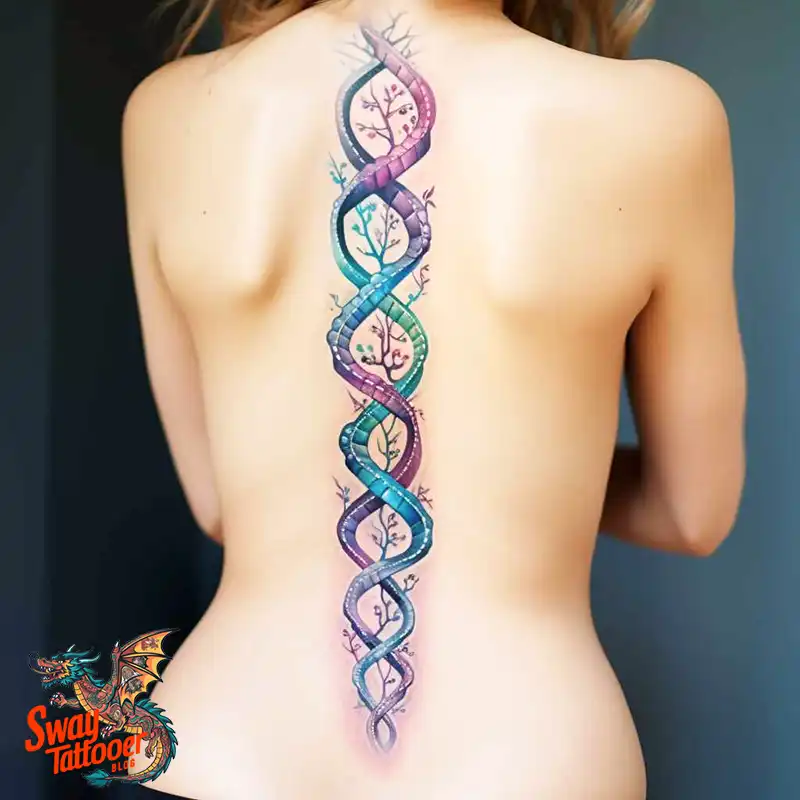
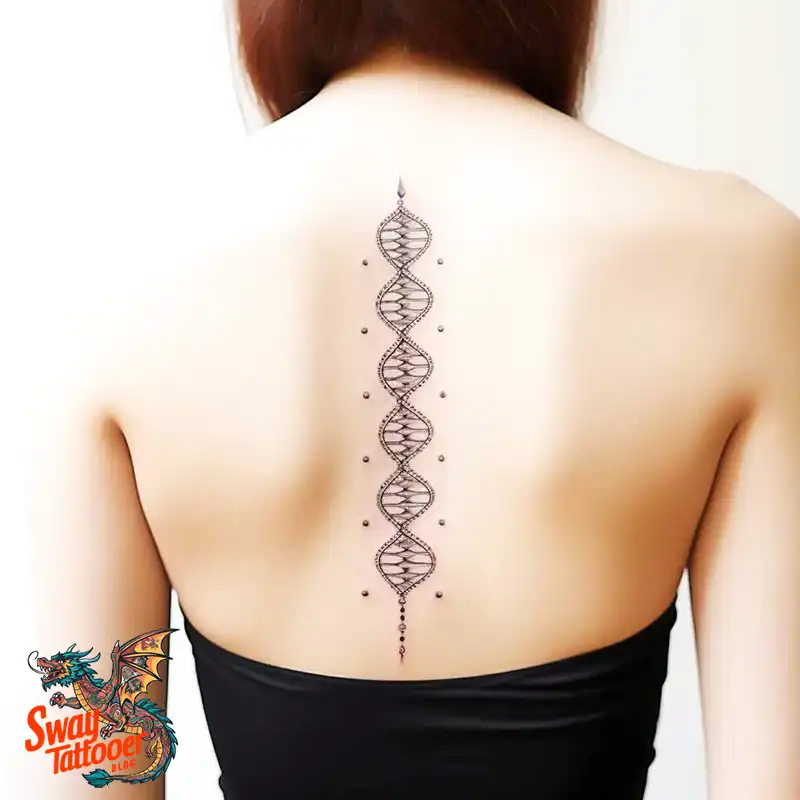

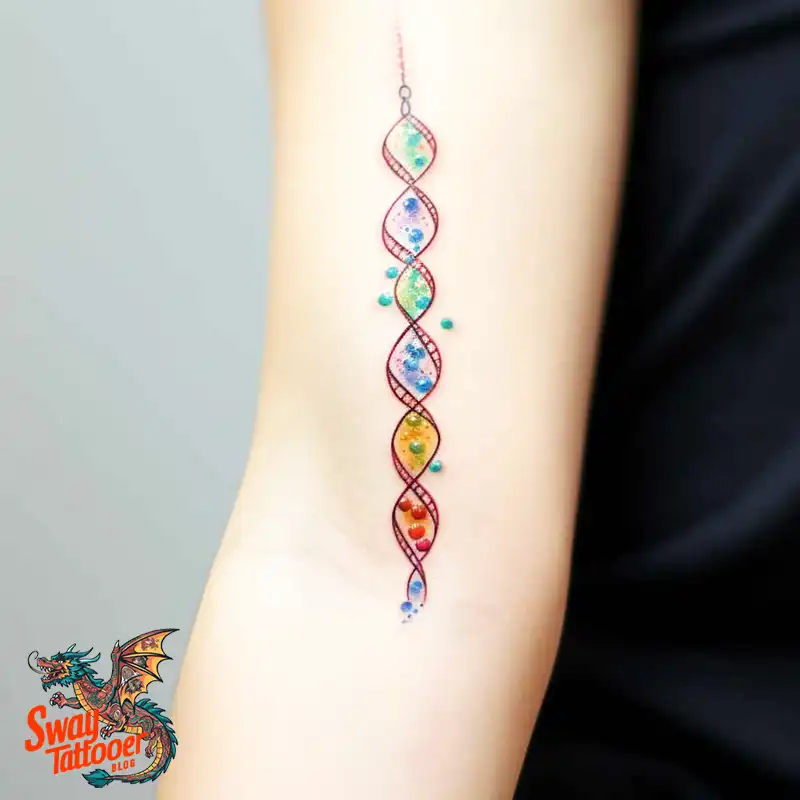
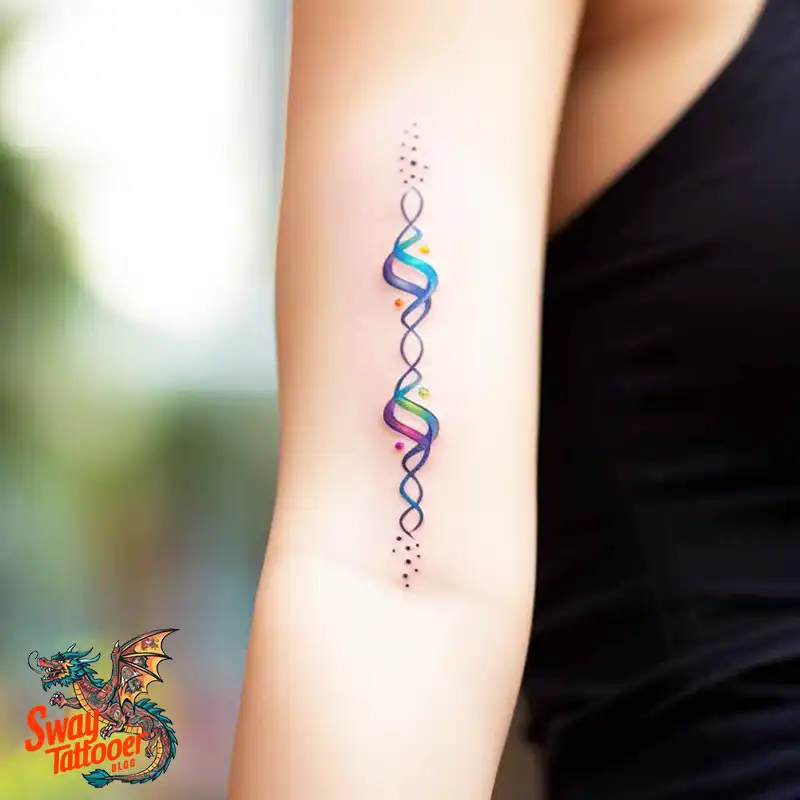
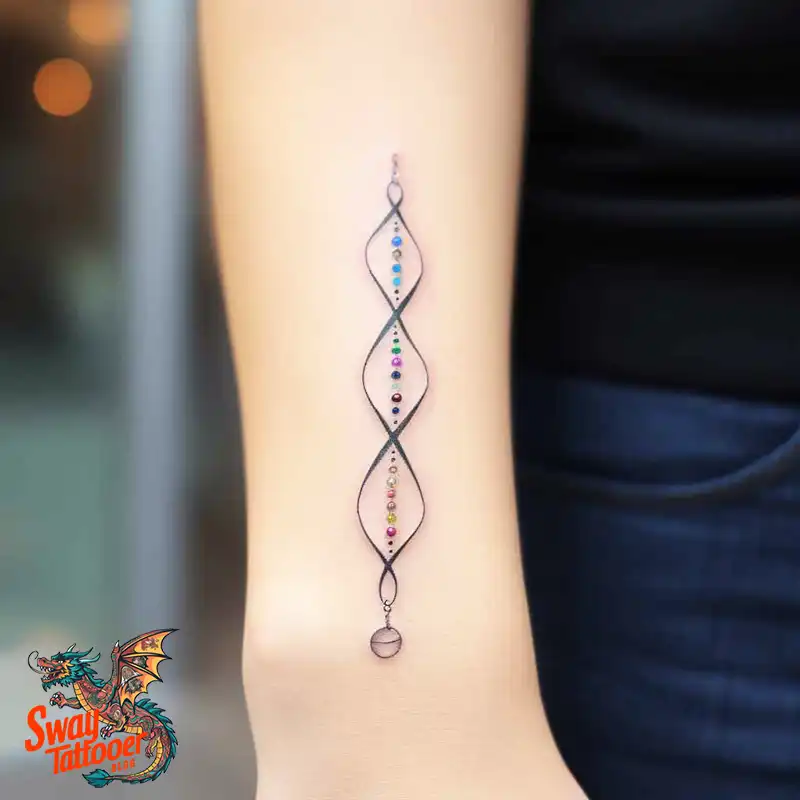
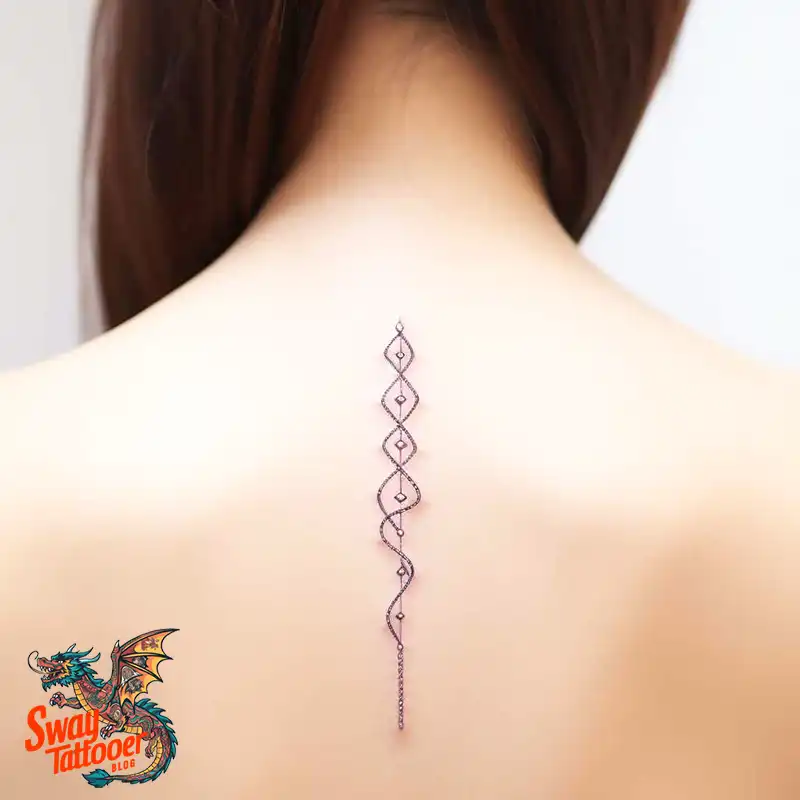
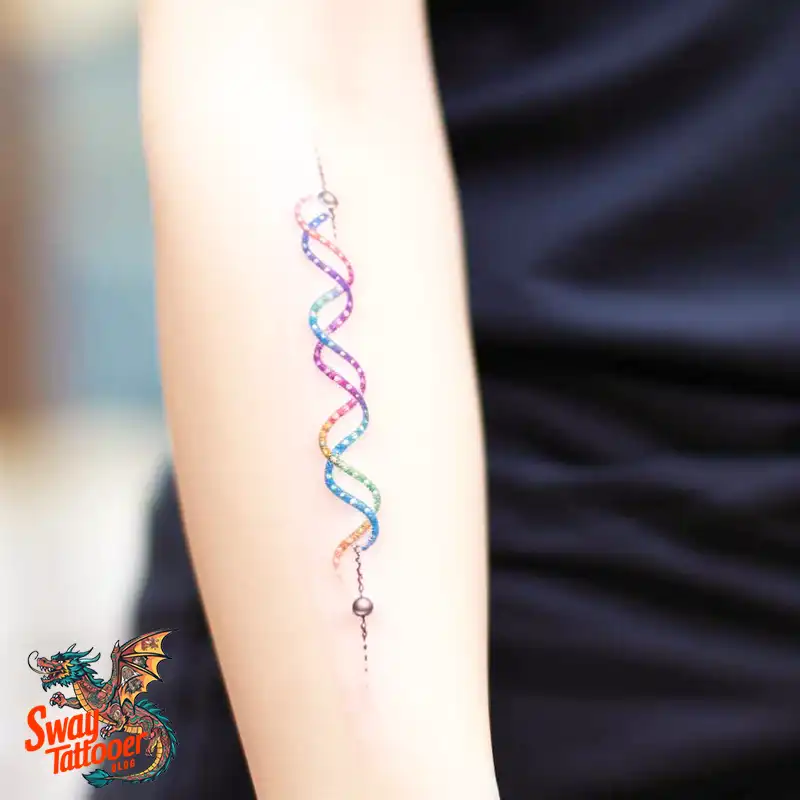
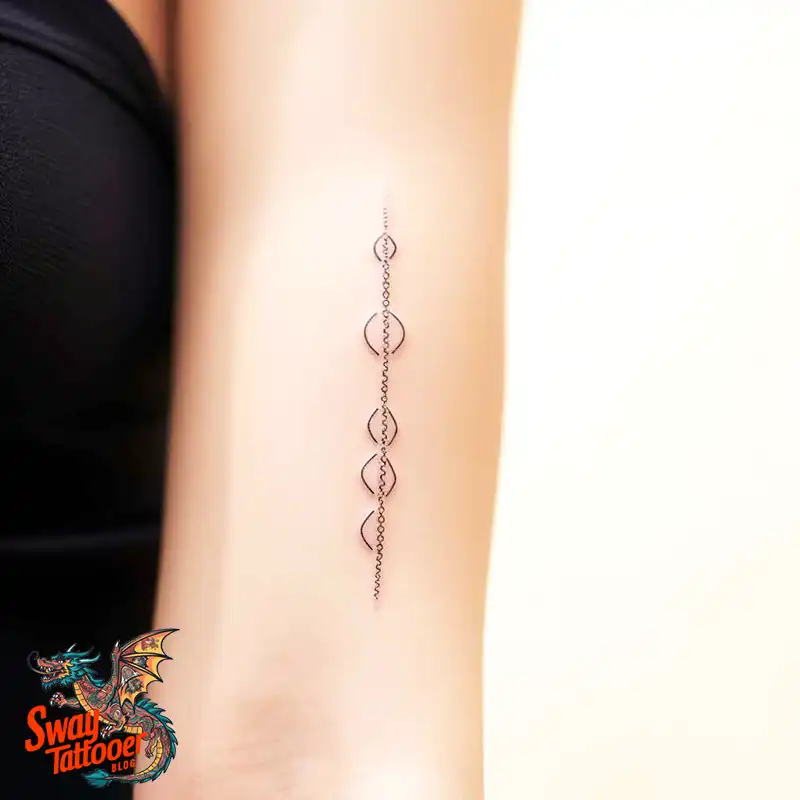
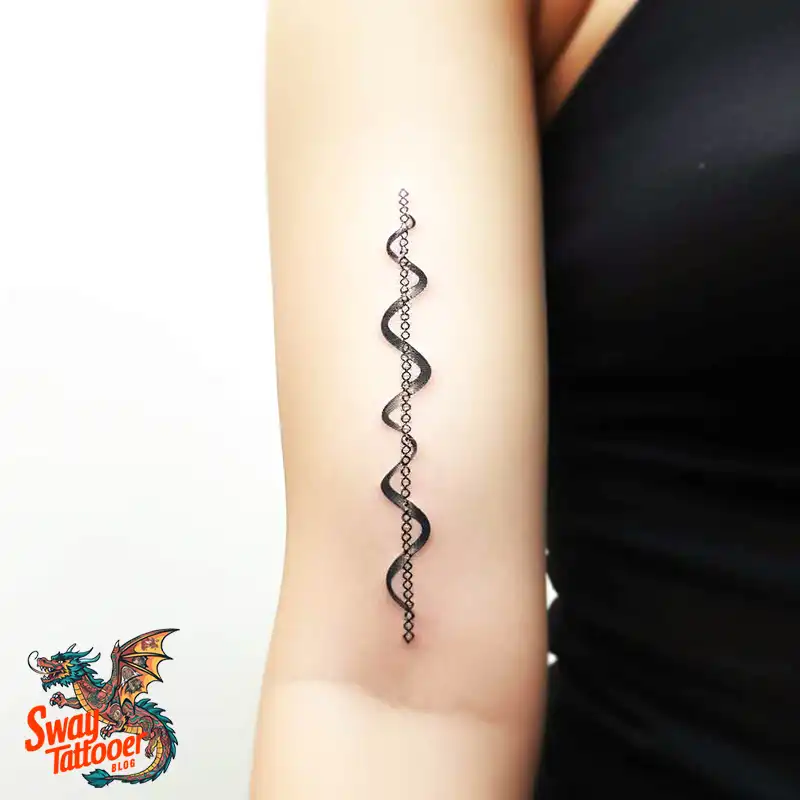

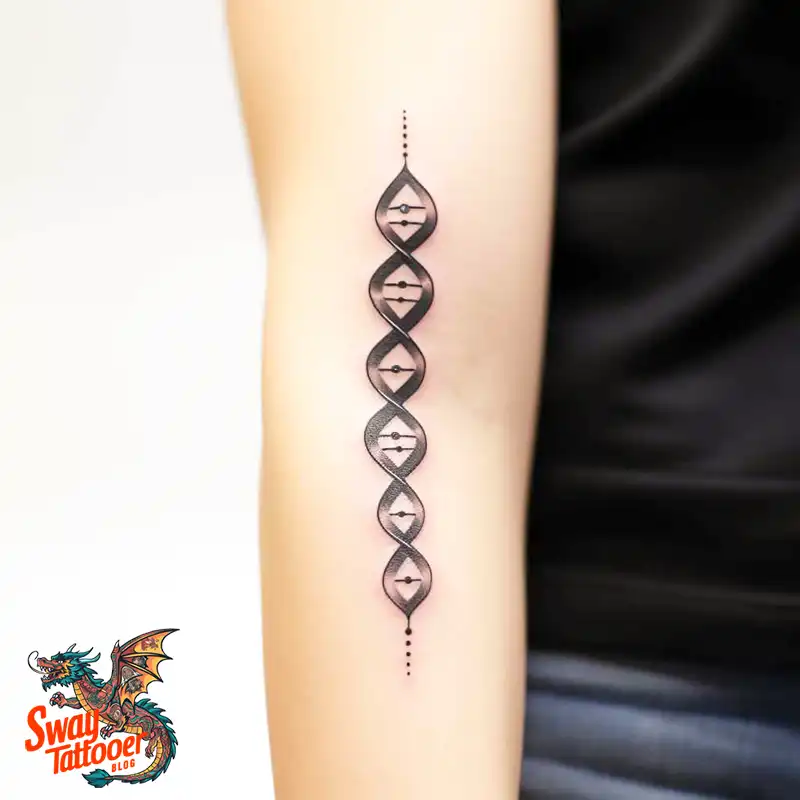
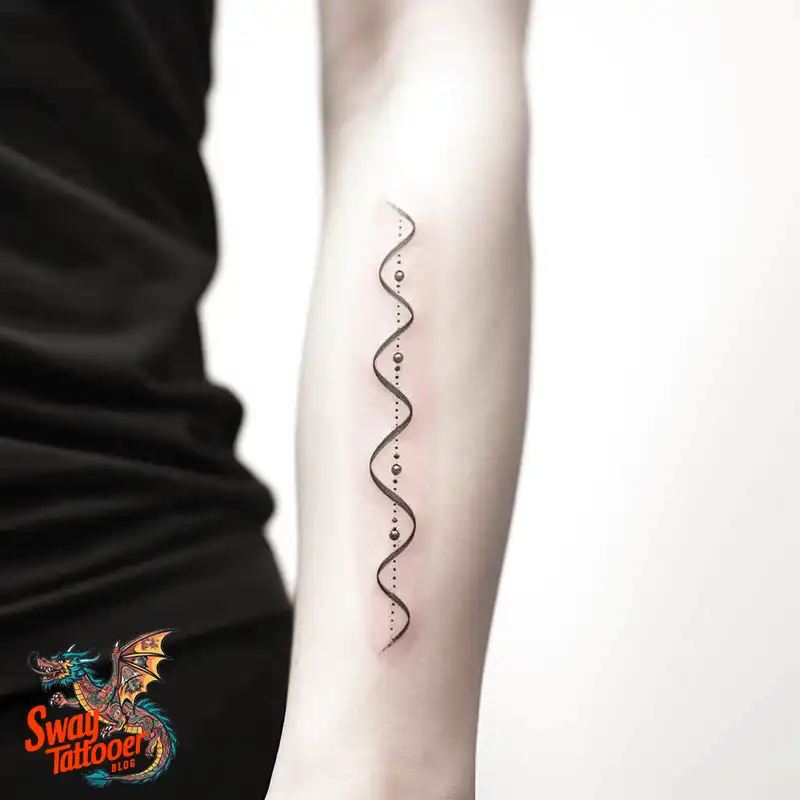
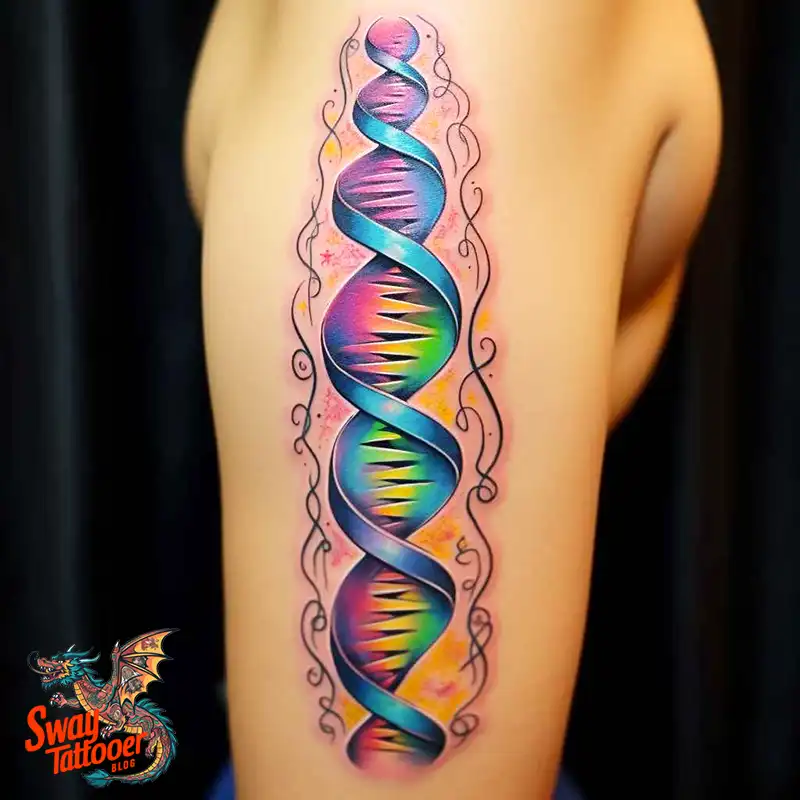

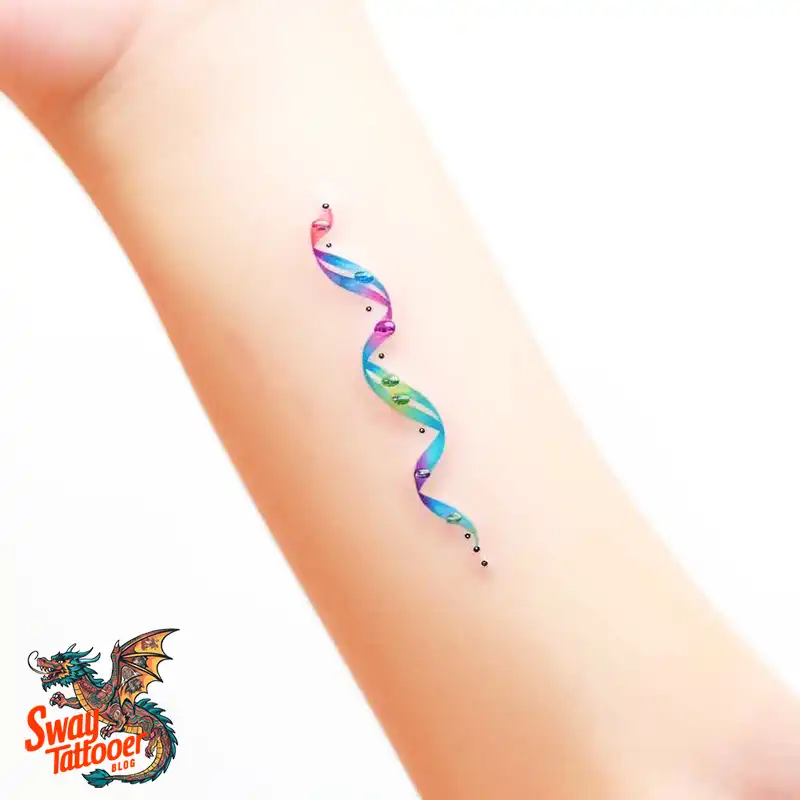
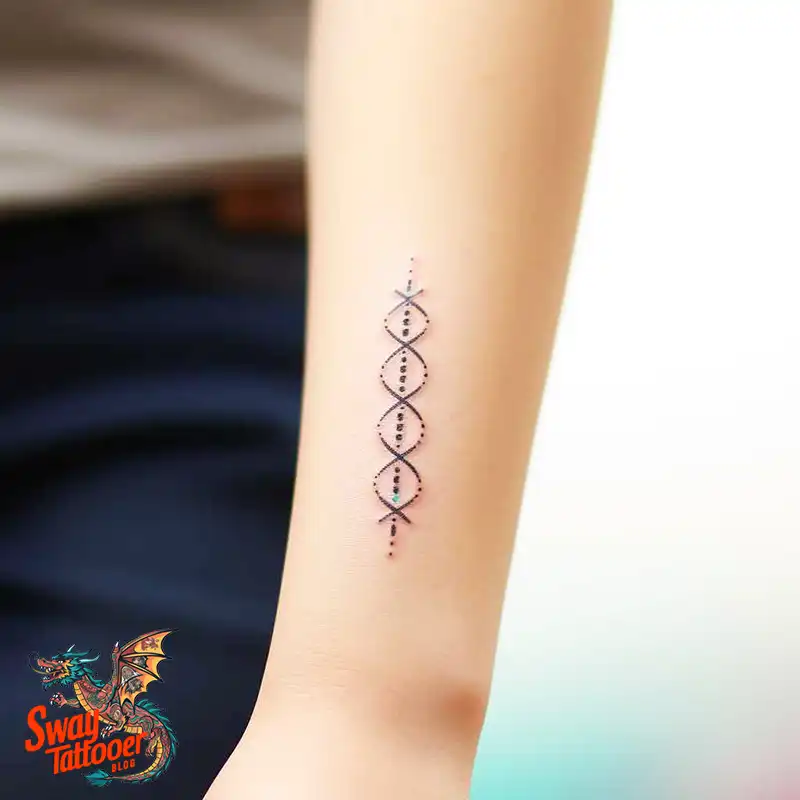
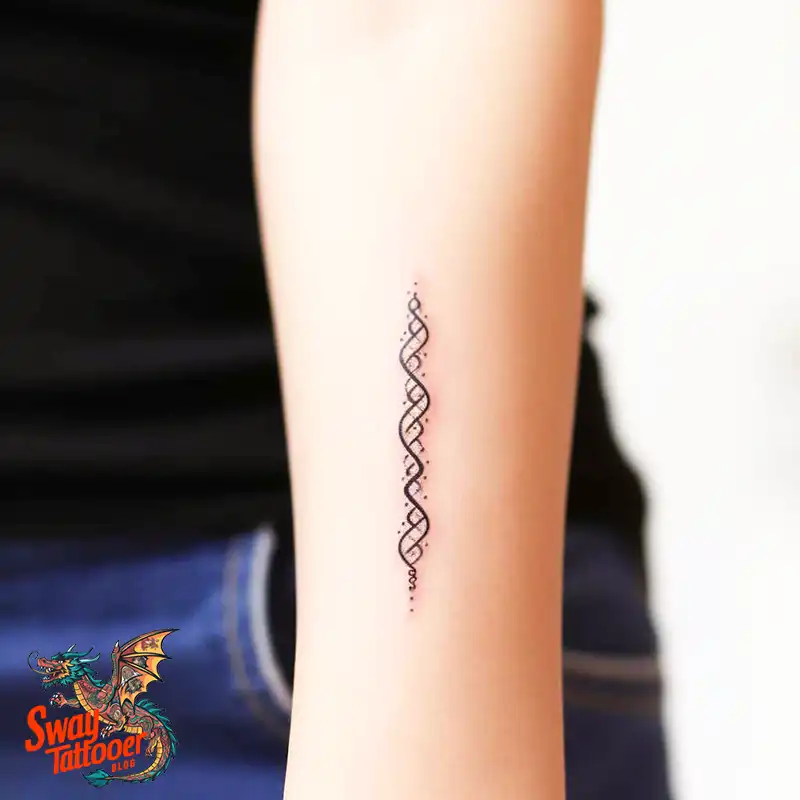
Unveiling the World of DNA Tattoos:
Innovation does not go further in body art. Modern tattoos exist at the forefront of self-expression and individualism. Enter DNA tattoos, a movement on the avant-garde that joins art-the aesthetic appeal of the traditional tattoo-with the core constituent elements of life itself. This amazing marriage of science and art has enabled people not only to carry part of their biological identity on their skin but has also opened avenues for a closer association with their identity and heritage.
What Are DNA Tattoos?
DNA tattoos are the revolutionary concept whereby an individual’s genetic material is integrated into tattoo ink, making it really personalized art. It involves the extraction of a small sample size of DNA, usually from saliva or hair follicles, embedding this sort of genetic material into the tattoo ink. The resulting tattoo will not only represent a design of personal significance but will also contain a trace of the individual’s unique DNA.
The Science Behind DNA Tattoos
The mixing of DNA into tattoo ink is an artisan process that involves a number of touches:
- DNA Extraction: A professional collects a sample of the person’s DNA, something usually done by non-invasive means, such as through a cheek swab or a number of strands of hair.
- Purification: Then, the collected DNA undergoes a cleaning process to remove impurities or components not needed.
- Embedding in Ink: Then, it is embedded into tiny particles in order to hold stability and long life. The tiny particles are then mixed with the tattoo ink.
This is done so that the DNA does not deteriorate even when applied on skin and is permanent, a real piece of one’s genetic material.
Why Get a DNA Tattoo?
DNA tattoos’ appeal is not new. People have great reasons for choosing this uncommon form of body art:
- Personal Significance: Unlike tattoos, which are representations of one’s own personal milestones, beliefs, or artistic preferences, DNA tattoos hold part of the very essence of the individual.
- Commemorative Tattoos: For those who want to remember a loved one, putting their DNA into a commemorative tattoo brings a deep meaning and personal touch.
- Identity Symbol: At a time when self-expression and identity have become so important, DNA tattoos are second to none in stating one’s identity and biological heritage.
Aesthetic Versatility: DNA tattoos can be designed in any style-from a simple monogram to an intricate portrait or even abstract art, which means versatility in many different artistic expressions.
The Process of Getting a DNA Tattoo
While the end result is a beautiful piece of personalized art, getting a DNA tattoo is serious business that involves careful planning and consideration:
- Consultation: This whole process will initiate with a consultation between a renowned tattoo artist and a DNA collection specialist. This will help discuss the design and placement and how DNA will be collected.
- DNA Collection: A sample of DNA is retrieved from an individual via a painless procedure, which can be anything from swabbing one’s saliva to even a hair sample.
- Design Approval: After a consultation, the tattoo artist will design something to the liking of the individual.
- Ink Preparation: The refined DNA is encapsulated and then mixed with the tattoo ink for preparation onto the skin.
- Application of Tattoo: The tattooist will apply ink onto the skin – embedding DNA into the design.
Ethical and Safety Considerations
Like any new trend, DNA tattoos also raise several ethical and safety concerns, which include:
- Sterilization and Hygiene: DNA sampling and the tattooing process must be treated under maximum hygienic conditions to avoid contamination or infection.
- Consent and Privacy: Clear consent for DNA collection, and privacy regarding the use and storage of genetic material.
- Regulation and Standards: Industry standards and regulation for safety and well-being for the clients.
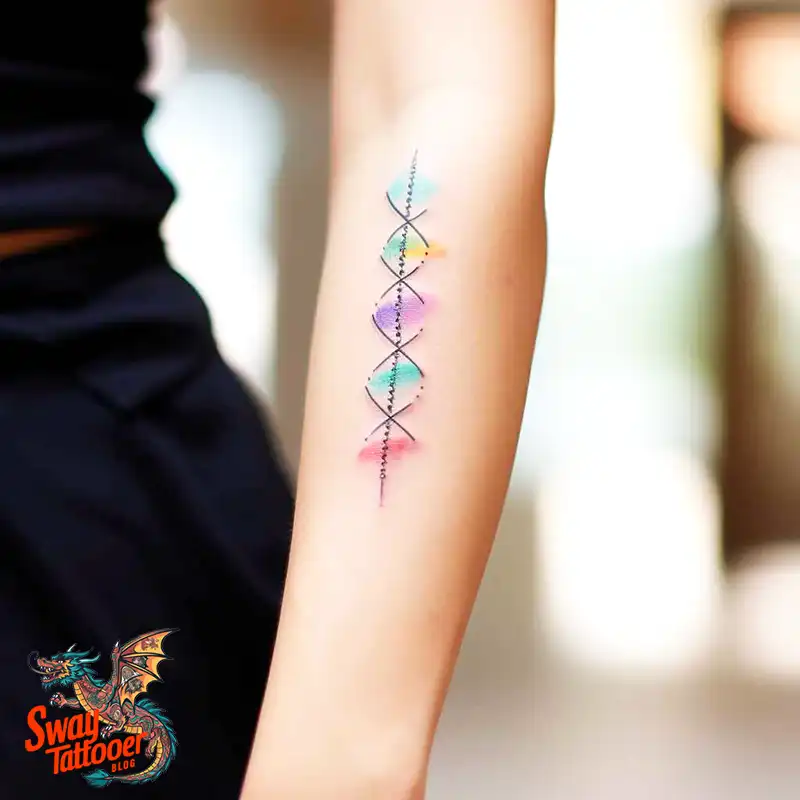
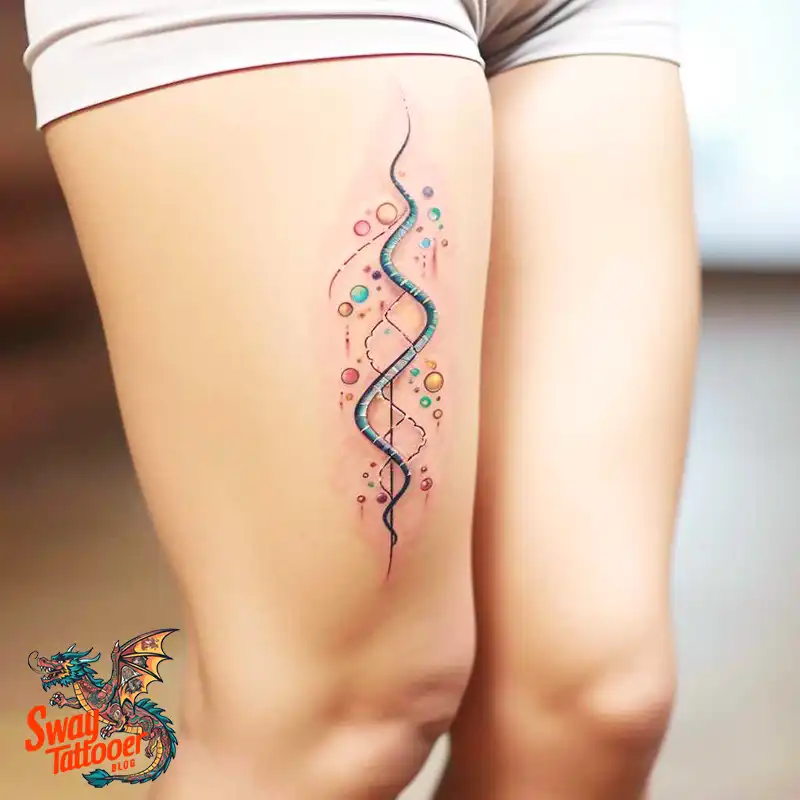
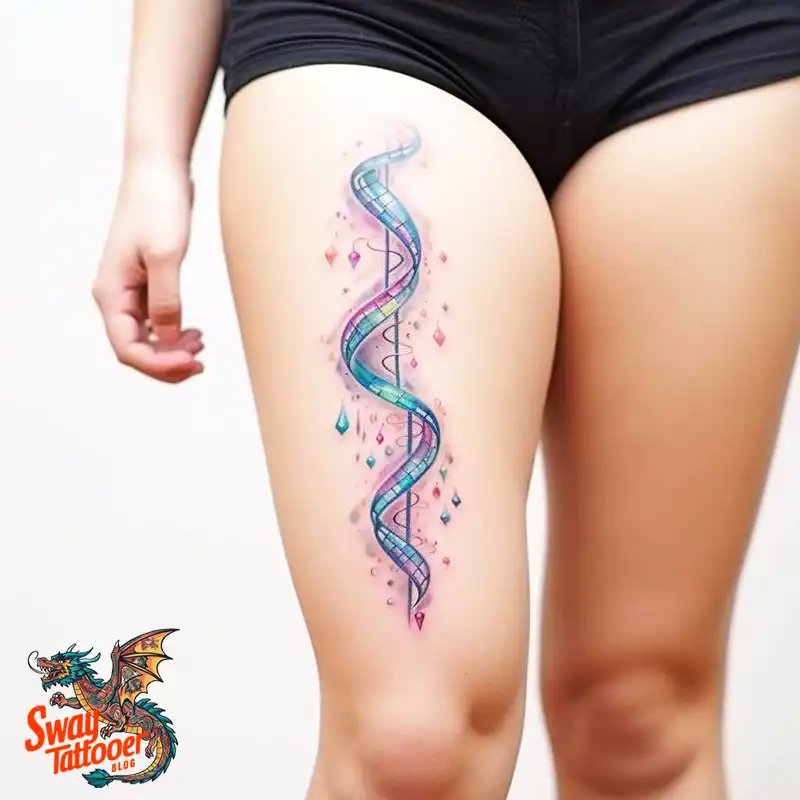
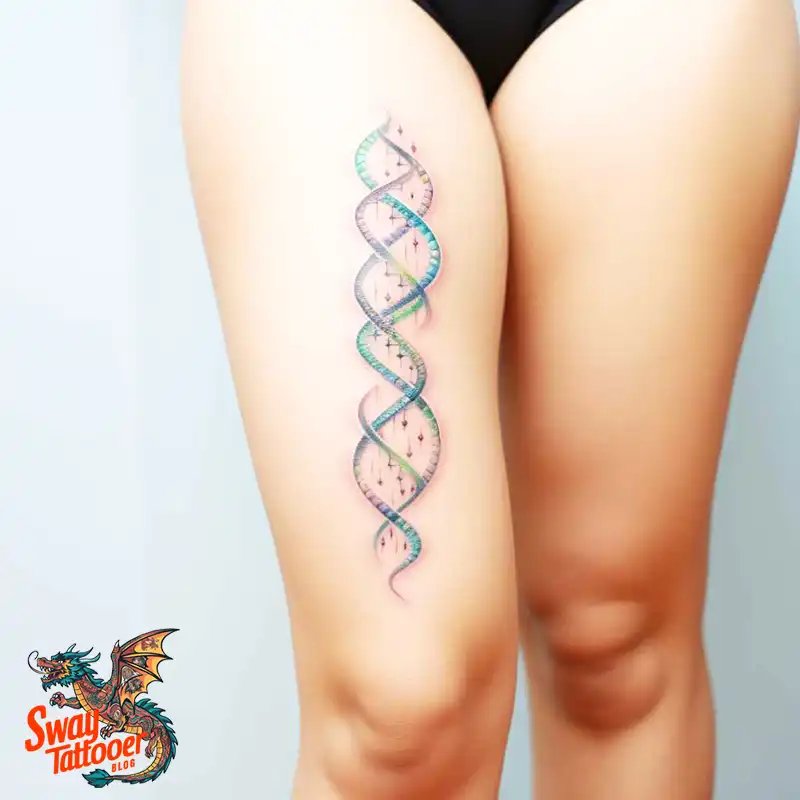
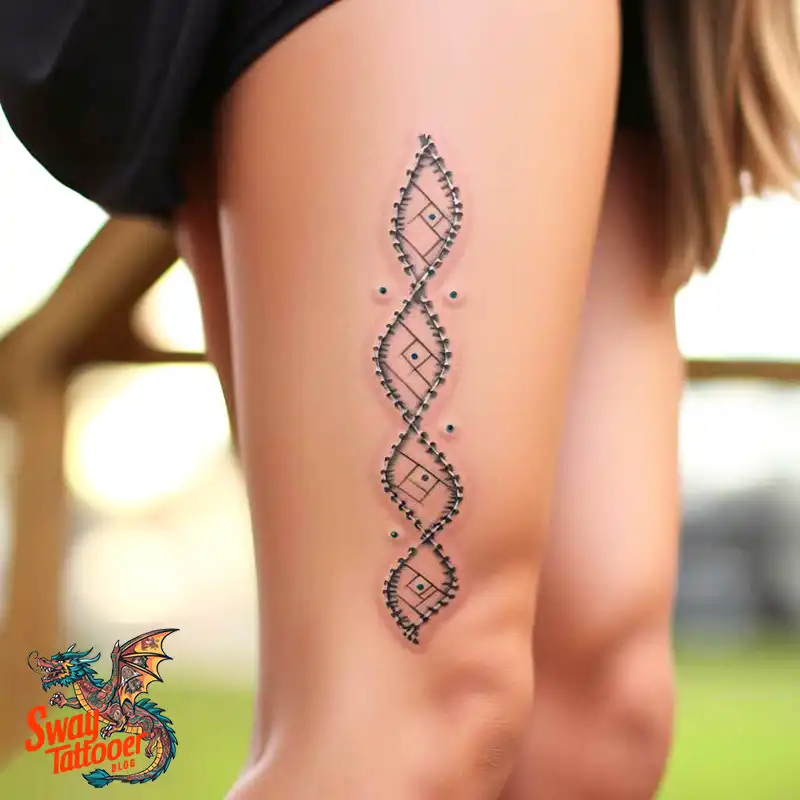


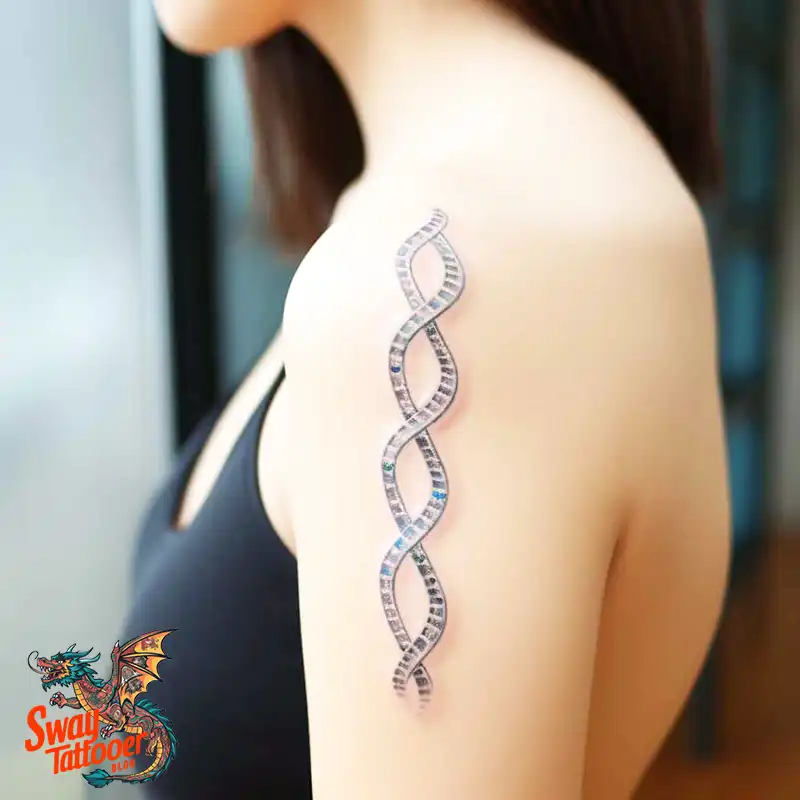

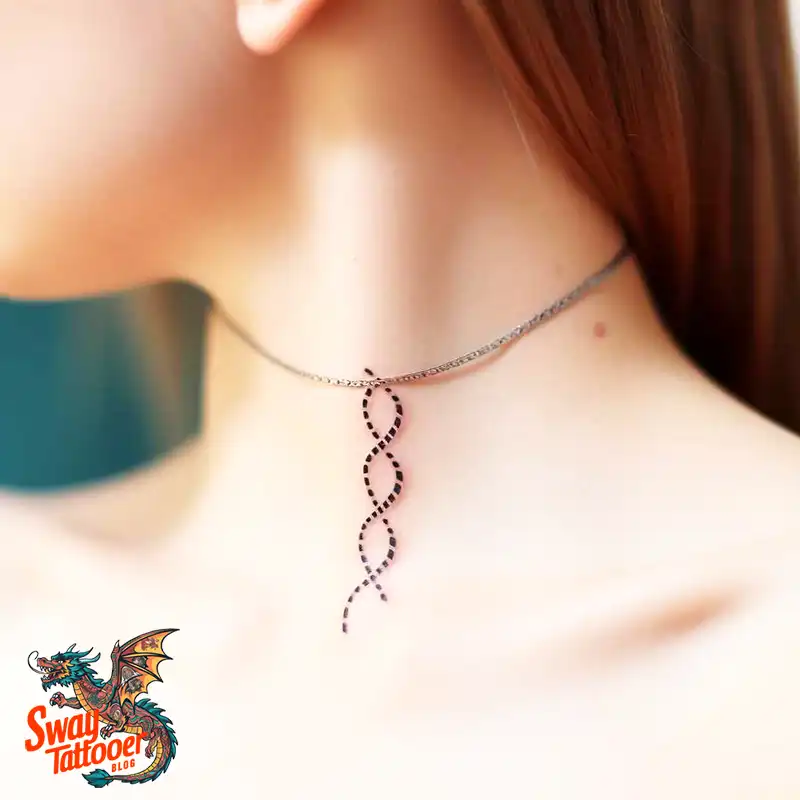
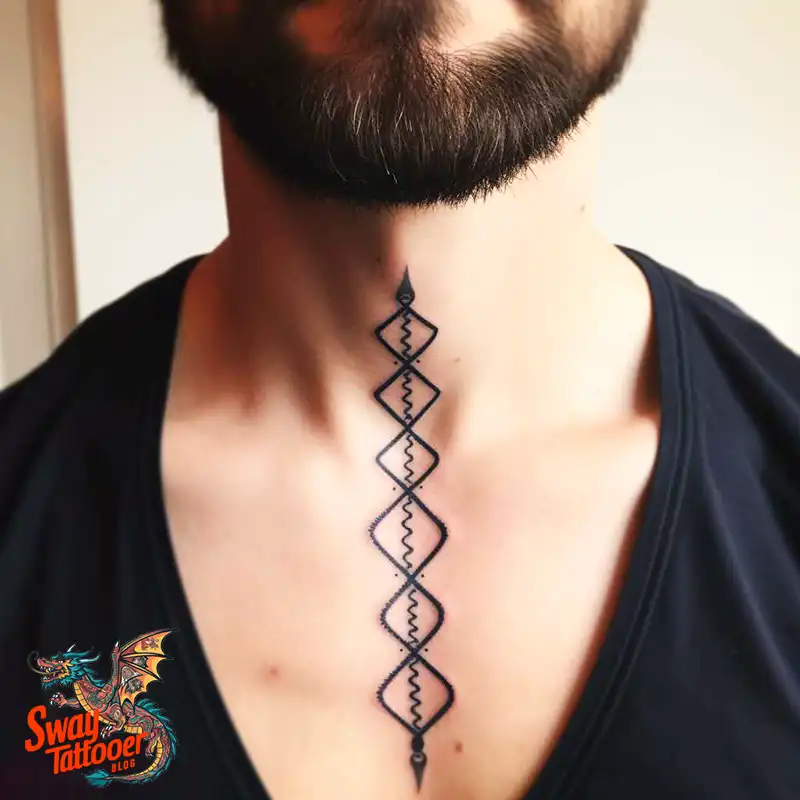
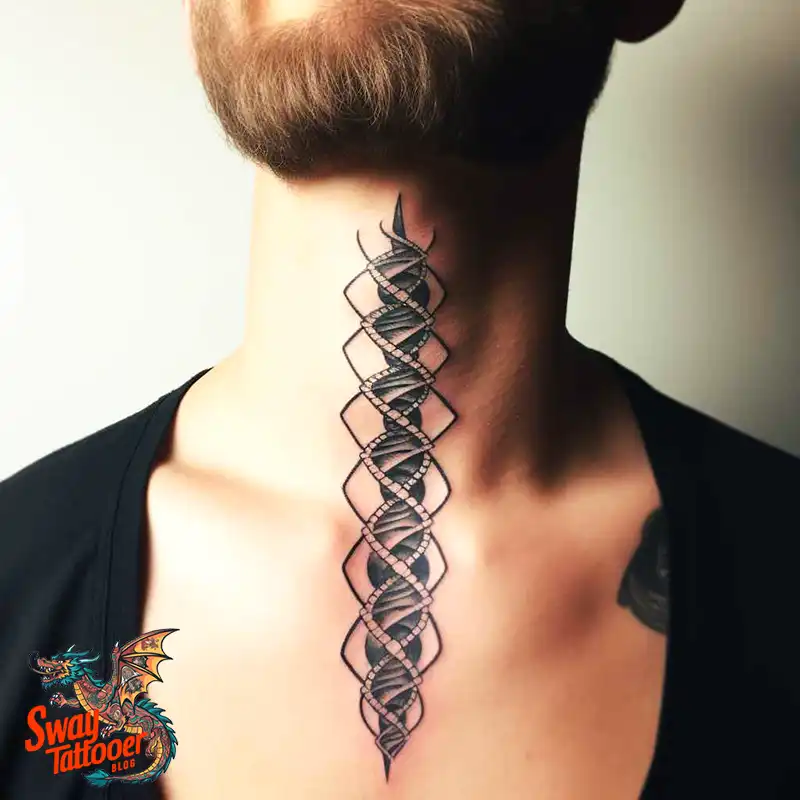
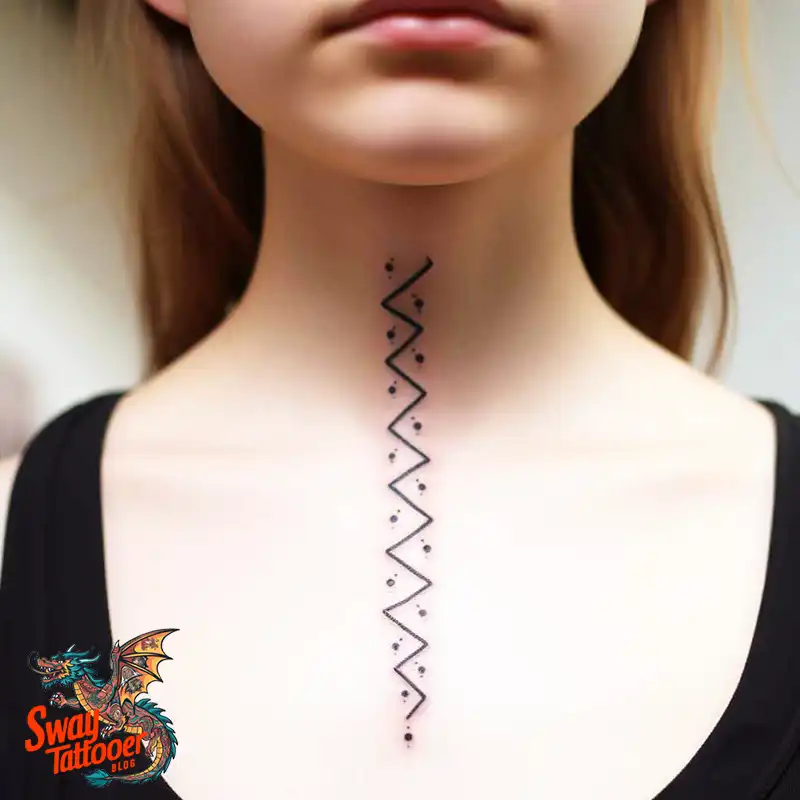
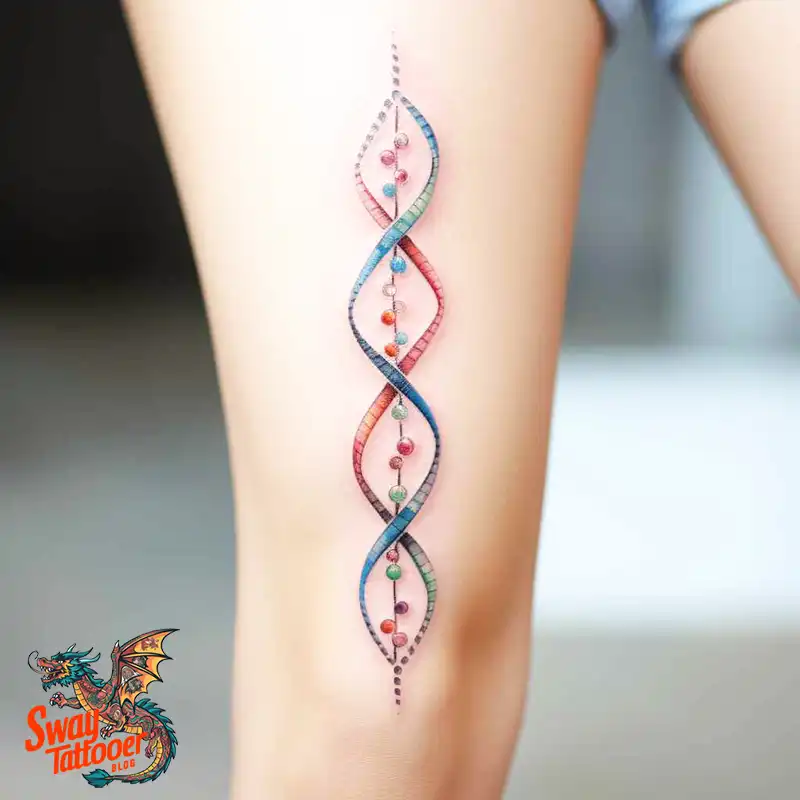
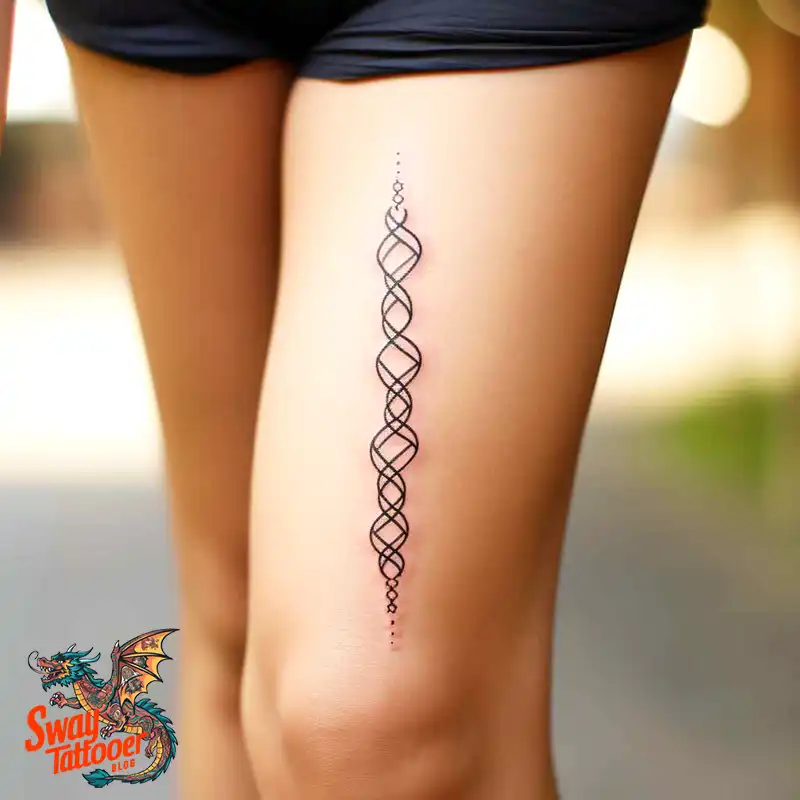
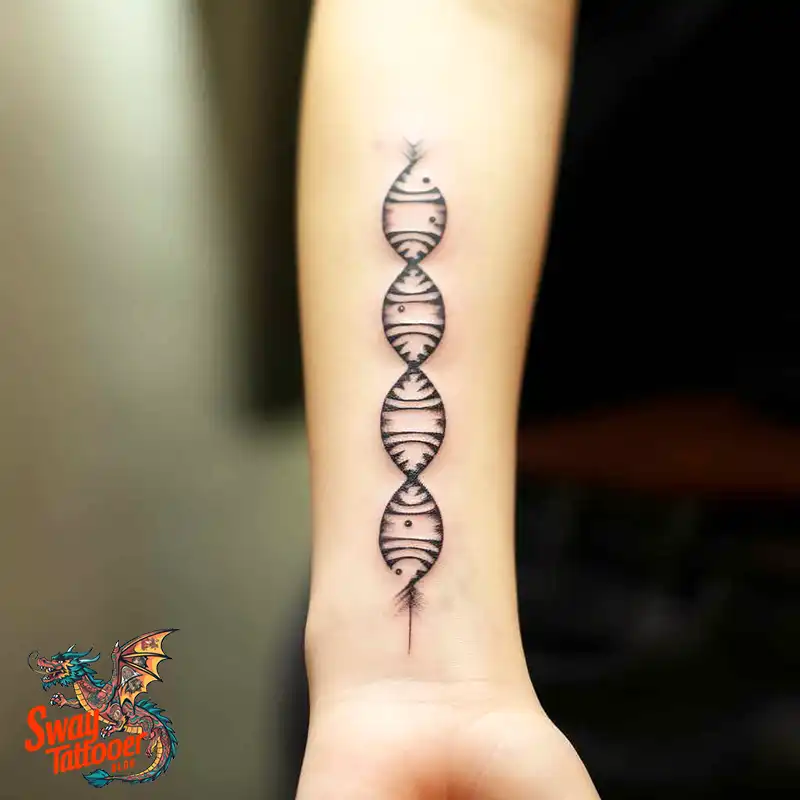
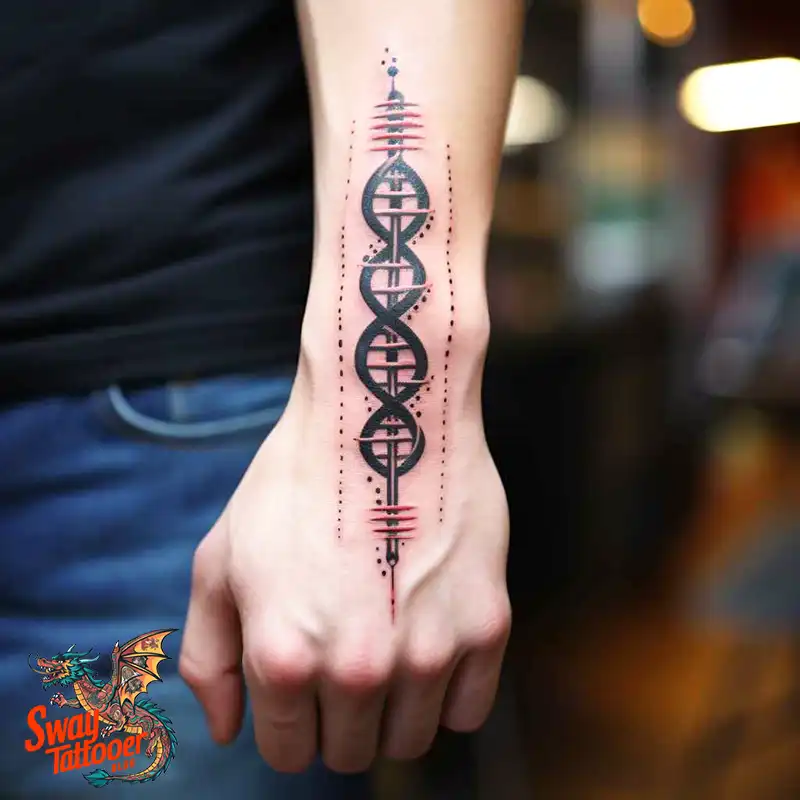
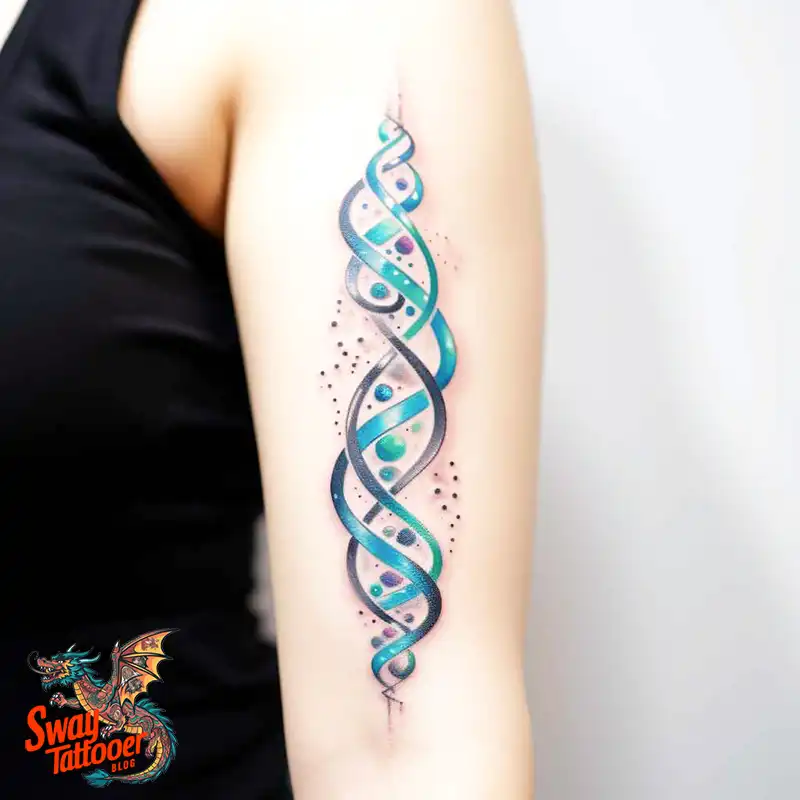
Future of DNA Tattoos
The biotechnology merged with the body art opens the gate to many possibilities. We might still see more innovation in the use of genetic material in personal expression, as technology will progress more. Future potential developments might include
Increased Stability: The better the process of encapsulation, the longer and brighter the DNA tattoos would last.
Genetic Markers to Order: Perhaps the possibility to decide what genetic markers one wants to display in their tattoos would create yet another level of customization.
Integration with Wearable Technology: Research into how DNA tattoos can be combined with wearable technology to monitor aspects of health or link to a digital profile.
DNA tattoos are a revolutionary confluence of art and science and arguably represent one of the closest-to-the-bone ways to symbolize one’s genetic being. While the concept itself is fresh, this has managed to make its mark in the world of body art. As with any tattoo, it’s important to research the process out in-depth and understand it, find a reputable artist to go to, and weigh ethical considerations. The DNA tattoos introduce an unparalleled opportunity for those in need of a different and profoundly personal form of self-expression-to wear one’s essence on his sleeve, literally.
DNA Tattoo Ideas:
Tattoos have been one of the most conventional methods of representation of identity, values, and personal tales of many. Recently, DNA tattoos have come up with a fresh meaning and are new and interesting ways of connecting the dots between science and art on a personal level. Some of the various types of DNA tattoos, what they are, and why they mean so much to those wearing them are discussed below.
1. Helix and Strand Tattoos
Summary: Helix and strand tattoos are some of the most iconic visual representations of DNA in body art. Many of these tattoos visually depict a double helix-two interconnected spirals linked by ladder-like rungs-to visually suggest that DNA is double-stranded.
Relevance: The double helix is instantly recognizable as a symbol of life and biology. It’s many peoples’ idea of what their very building blocks look like. Such a tattoo would obviously indicate a person who thoroughly enjoys science, someone whose job was either genetic or molecular biology in nature, or someone who somehow feels a personal connection to the very root of life itself.
2. Genetic Sequence Tattoos
Summary: Genetic sequence tattoos express the nucleotide sequences, adenine, thymine, cytosine, guanine, which are joined together to form one individual DNA. The letters A, T, C, and G are used to depict the sequences or, in a more abstract manner, with an artistic interpretation of what it would look like.
Relevance: These can be highly personal tattoos; they might even show the person’s genetic code. They could signal the importance of genes entailing heritage, health, or even family traits. A tattoo can act as an homage to ancestry or be in remembrance of some genetic defect running in a family.
3. Ancestral DNA Tattoos
Summary: Ancestral DNA tattoos commonly include elements that illustrate a person’s genetic heritage. This might be expressed as motifs or symbols from cultures or even regions where their ancestors are from, sometimes intertwined with a DNA strand or helix.
Relevance: These tattoos celebrate the rich tapestry of an individual’s ancestry and heritage. Services of genetic testing such as 23andMe and AncestryDNA have made people more cognizant of their roots. A DNA tattoo featuring ancestral genes can be the most relevant means of stating one’s identity in honor of the varied origins that shape their being.
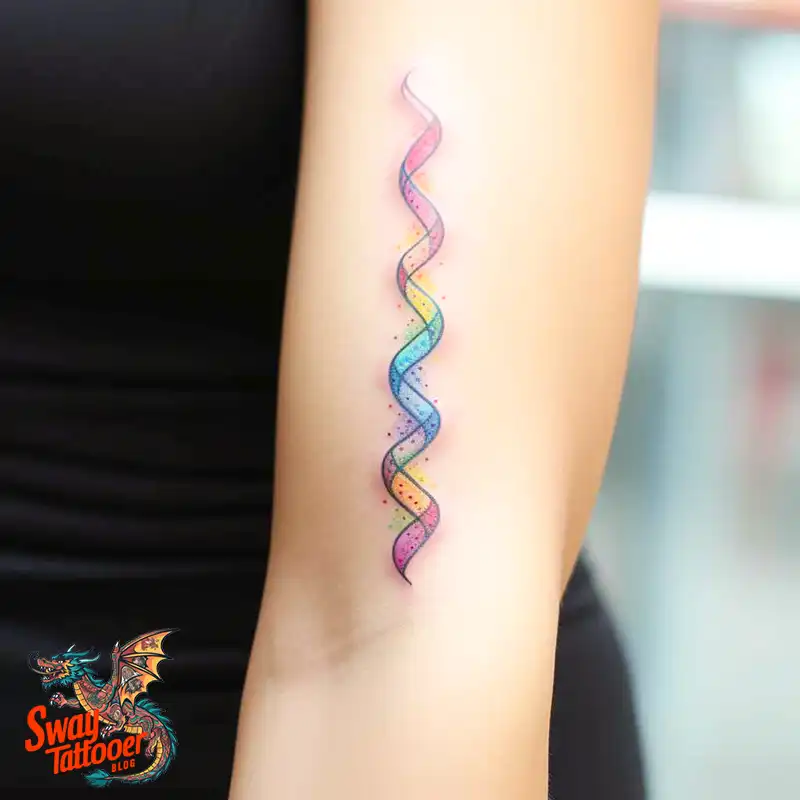
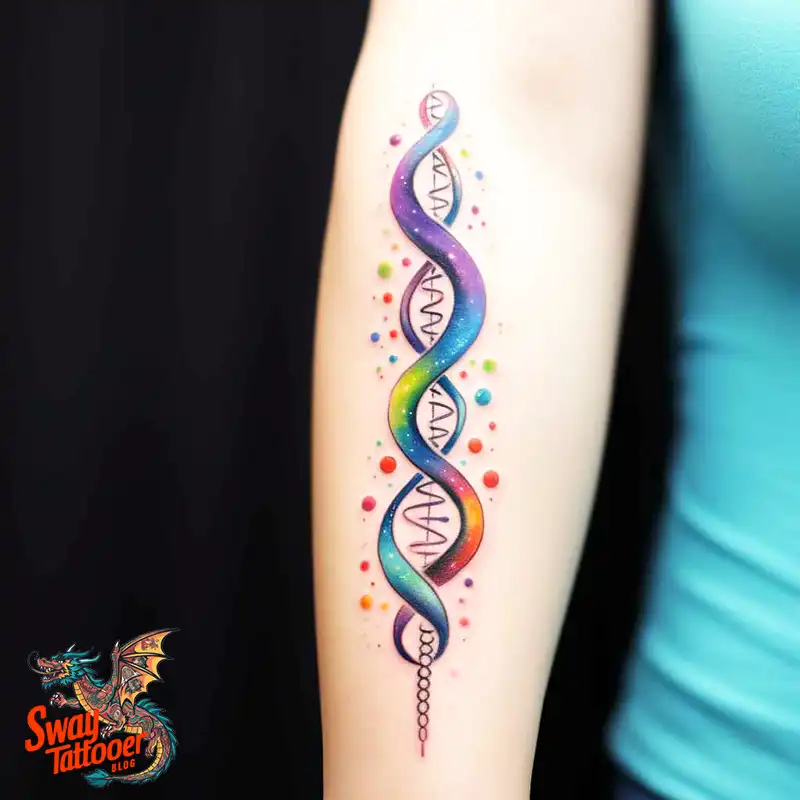
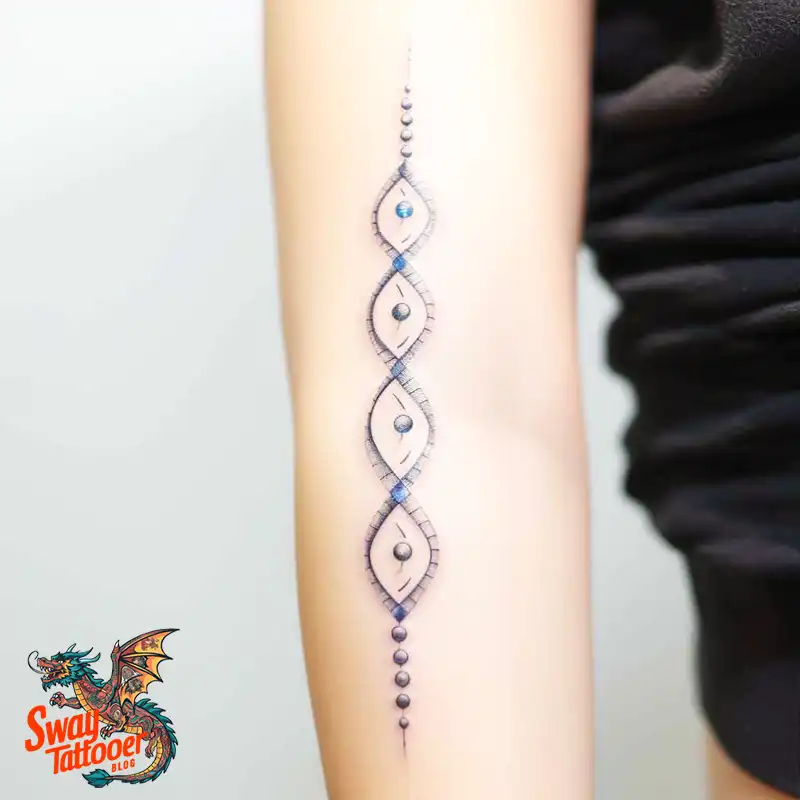
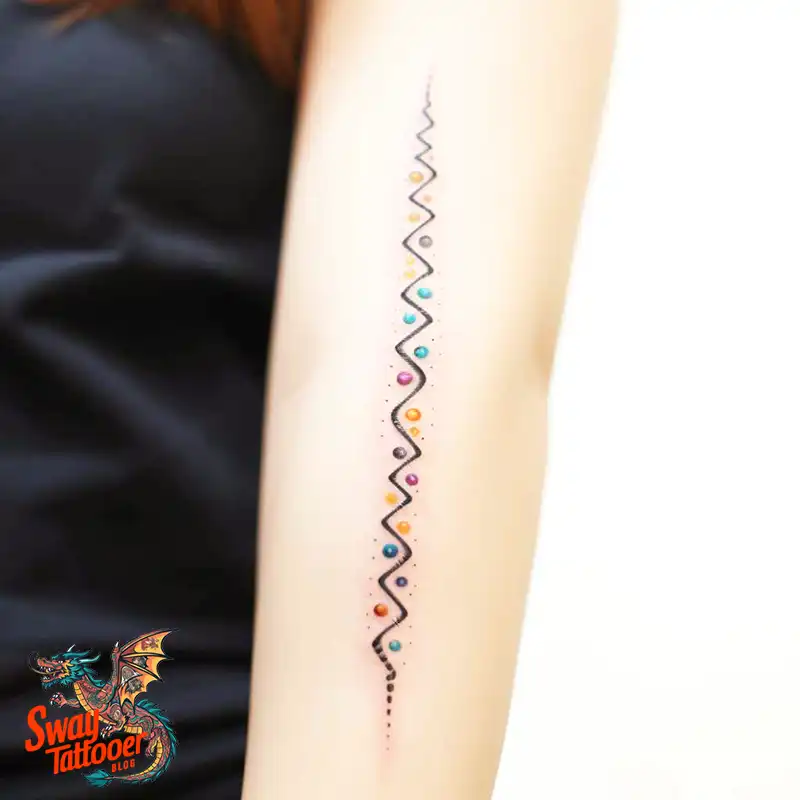
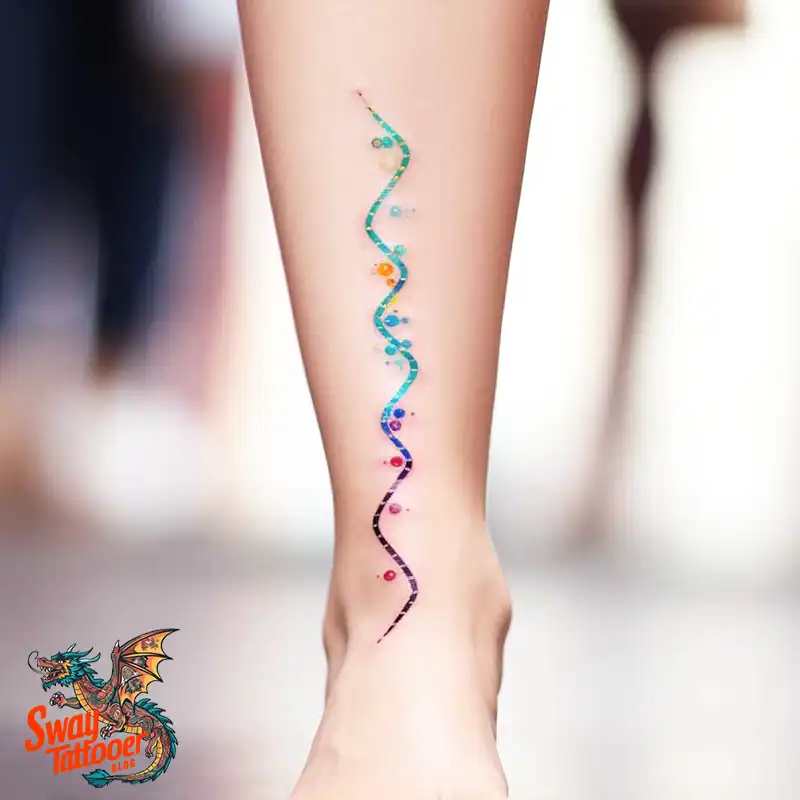
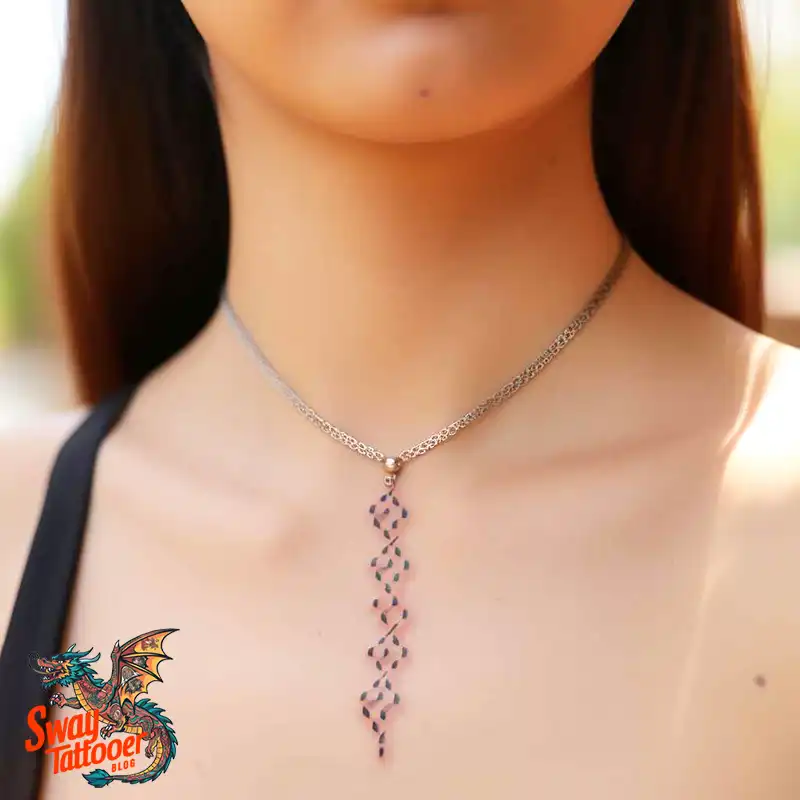
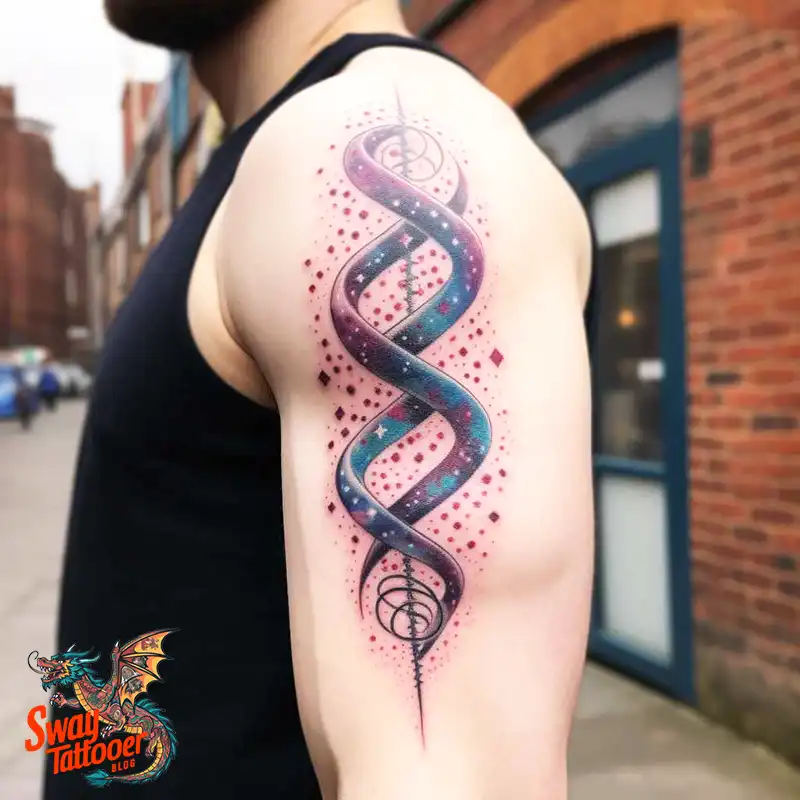
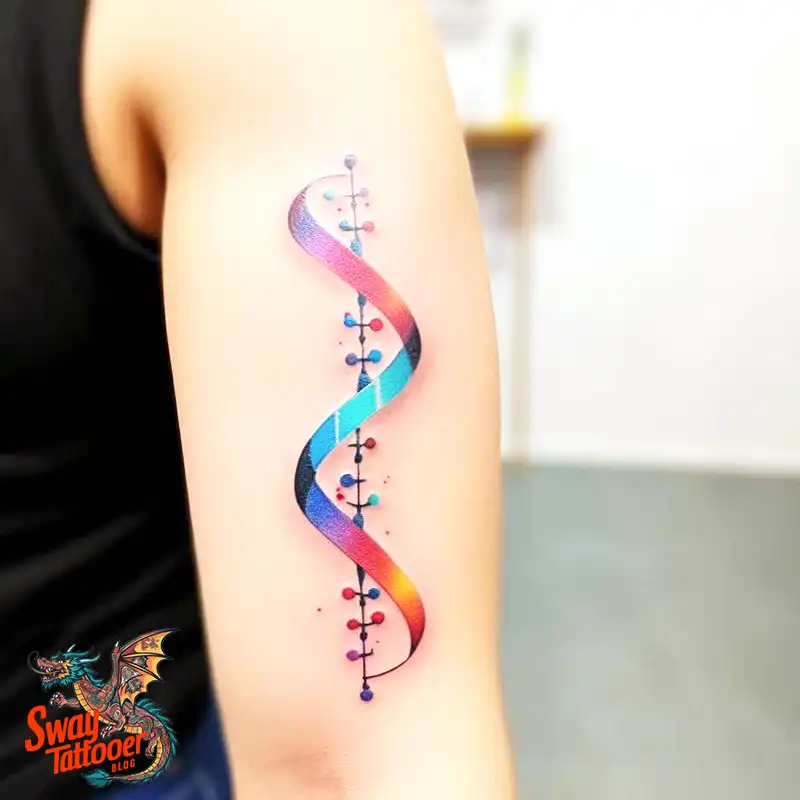
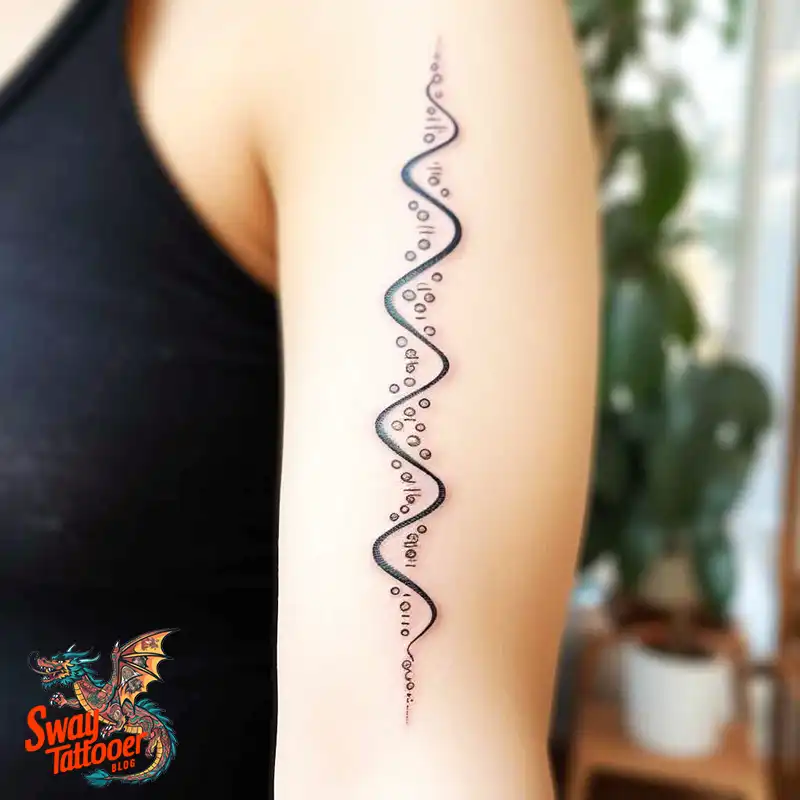
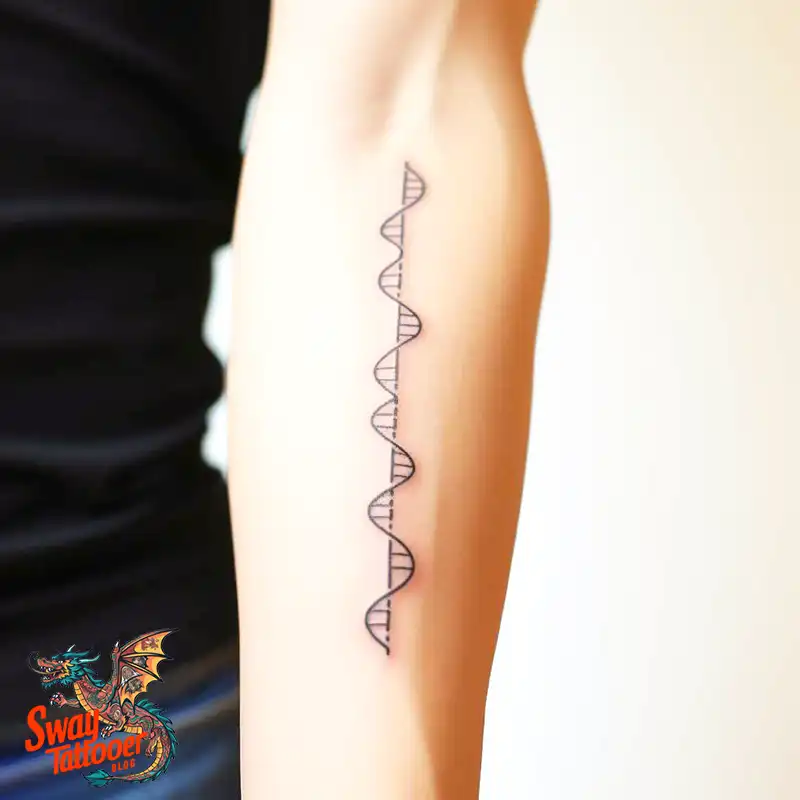
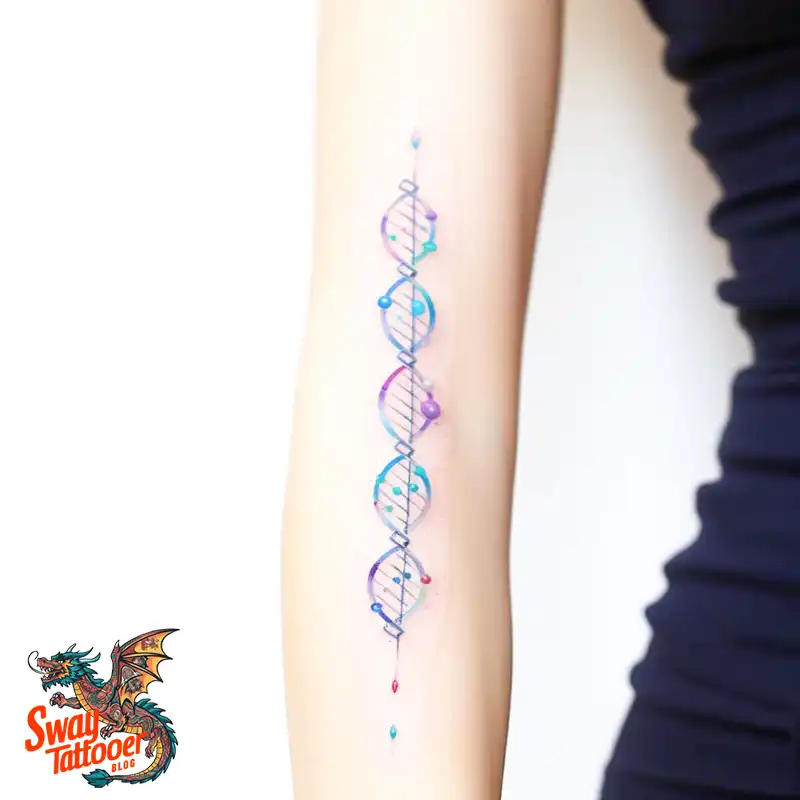

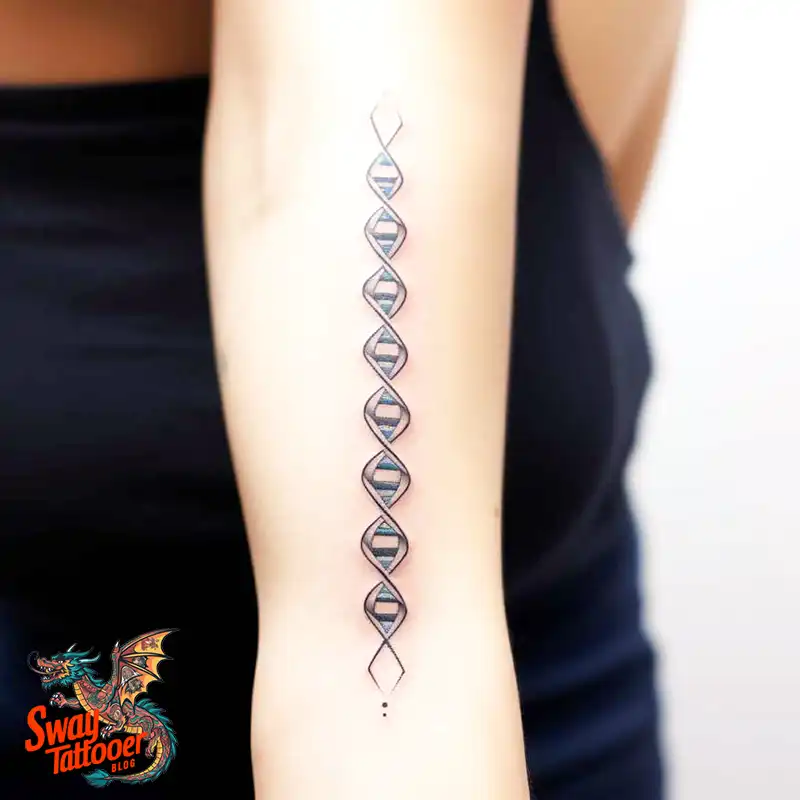
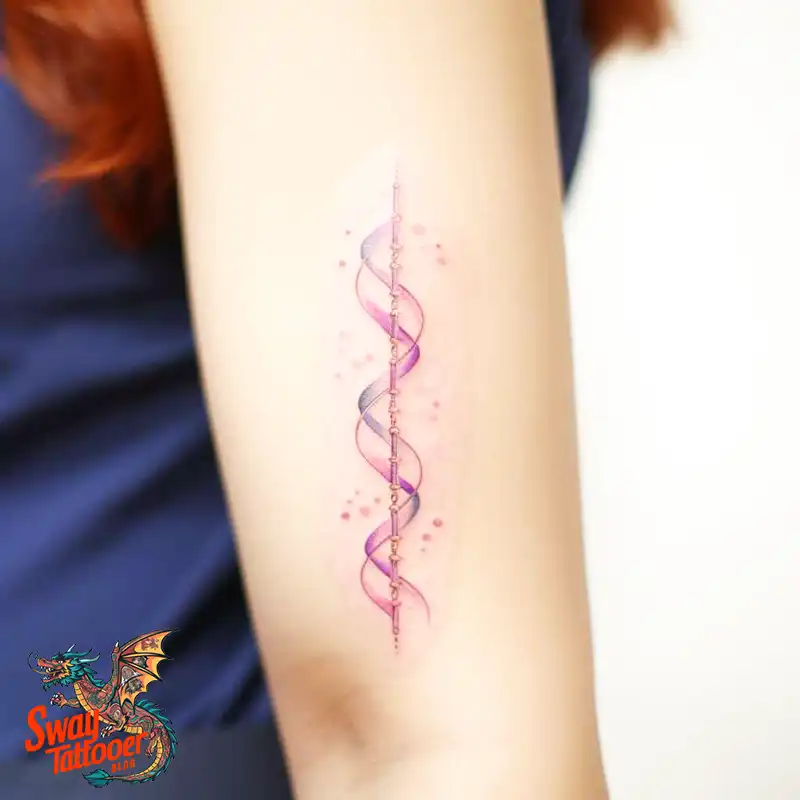
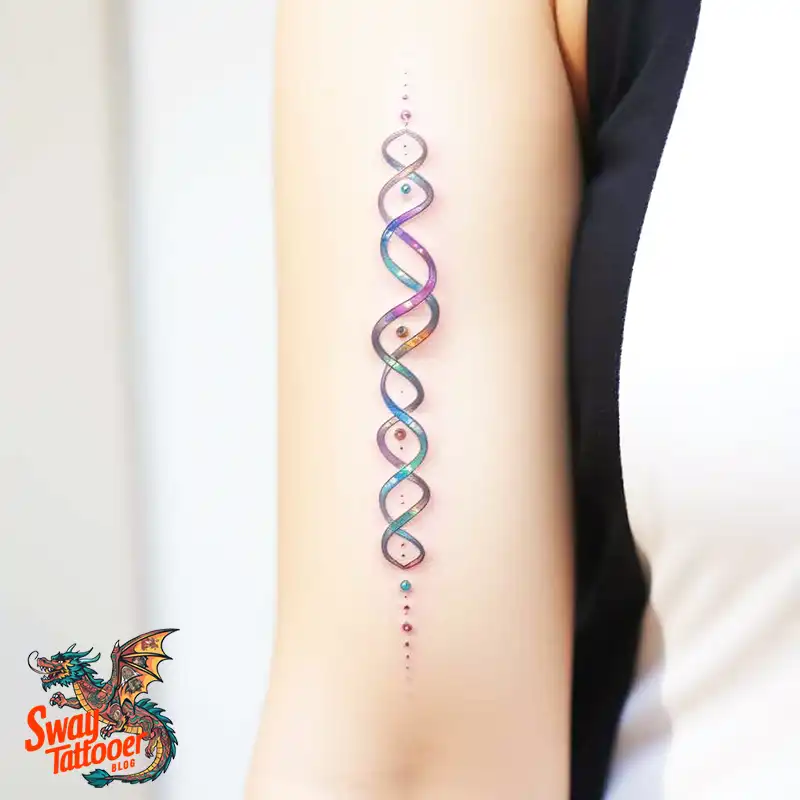
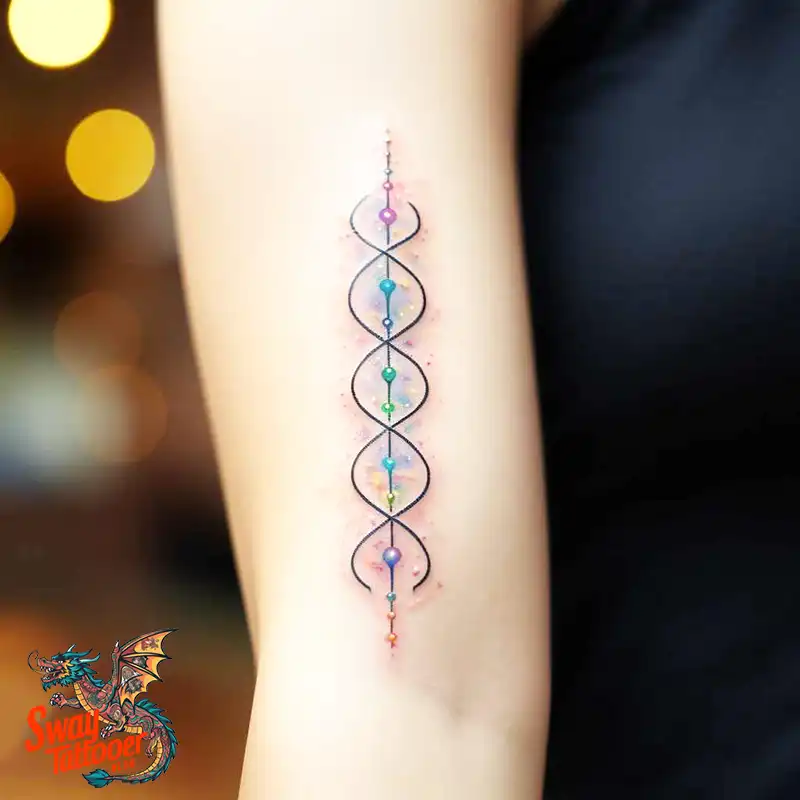
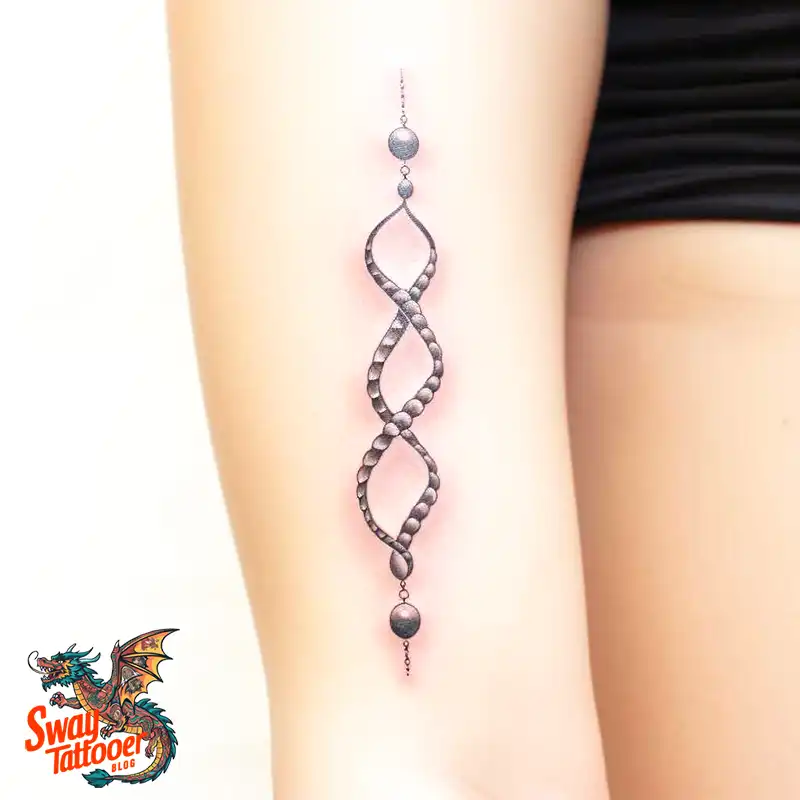
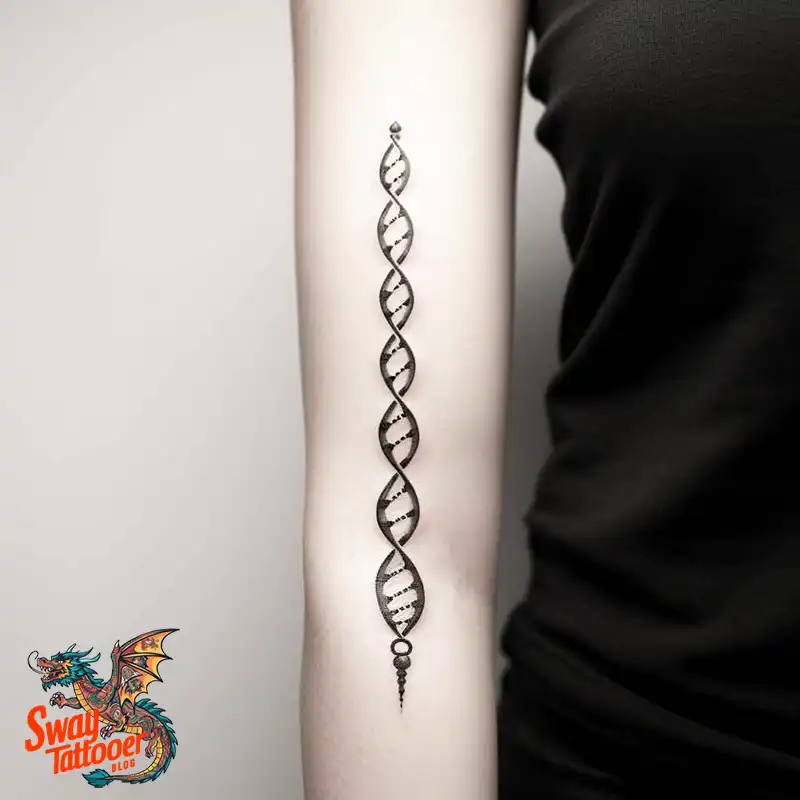
4. Bioluminescent DNA Tattoos
Bioluminescent DNA tattoos are a concept of tattoos that use UV-reactive ink for creating design features that would glow under black light, imitating natural bioluminescence effects. These may involve glowing elements combined with traditional DNA helix designs.
Relevance: Bioluminescent tattoos add a ring of astonishment and surrealism to an already fascinating domain of DNA. They may symbolize, much like unseen natural wonders that only disclose their beauty under specific conditions, the hidden beauty and mystery in life. A tattoo of this nature would be very appealing to people who are fascinated by the juncture where science meets magic.
5. Custom Genome Tattoos
Summary: Custom genome tattoos make genetic sequence tattoos a little more personal, with relevant and important genetic data such as the sequence of a gene linked to one of their particular traits or genetic information about a loved one.
Relevance: Many get this type of tattoo because it holds personal and deeper meaning for them. This can mean anything from a close relationship that one is trying to remember, commemorate an event, or simply as a reminder of one’s personal battle and victory with one’s genes. It is a kind of carrying your existence or story in an art form.
6. CRISPR DNA Tattoos
Summary: CRISPR DNA tattoos show the revolutionary gene-editing technology CRISPR-Cas9. The design might incorporate an active complex of CRISPR-cut and editing DNA strands.
Relevance: CRISPR is revolutionary technology that may shape the future of genetics, medicine, and biotechnology. A CRISPR tattoo might symbolize passion for scientific progress, a career in genetics research, or an interest in the ethical issues raised by gene editing. It’s a design into the future to homage modern science.
7. Chromosome Tattoos
Overview: Chromosome tattoos are structures in cells that carry DNA. These tattoos may display single chromosomes or karyotypes, which are the whole complement of chromosomes of an organism.
Relevance: Chromosome tattoos may reflect one’s interest in genetics and the intricacy involved in the process at a cellular level. They may be used to symbolize particular chromosomal disorders for awareness and as a personal badge of survival. Some people get them to indicate and identify themselves with their genetic variations.
DNA tattoos can epitomize the deep connection of one with their biological being, heritage, and the miracles of genetic science. From the iconic double helix to personalized genetic sequences or visualizations of revolutionary technologies like CRISPR, these tattoos are bold displays of identity, knowledge, and beauty symbolizing the blueprint of life. As this trend continues to progress, it will be interesting to observe new designs and notions that further bridge the two worlds of art and science.
FAQs:
1. What is a DNA tattoo?
A DNA tattoo is a form of body art where the DNA of a human being is combined with tattoo ink to produce body art. This unique concept allows a person to have genetic material sited inside one’s skin as a permanent tattoo, adding a deeply personal touch to their tattoos.
2. How is the DNA collected?
DNA is usually collected by means of a simple, non-invasive procedure. This typically involves swabbing the inside of the cheek to collect cells, which are then mailed to a lab for extraction and purification.
3. Is the DNA in the tattoo still identifiable?
Once the DNA is mixed with tattoo ink and injected into the skin, the tattooing process itself degrades it somewhat. That means any DNA would likely not be in some sort of complete or scientifically definable form but serves as a very personal link nonetheless.
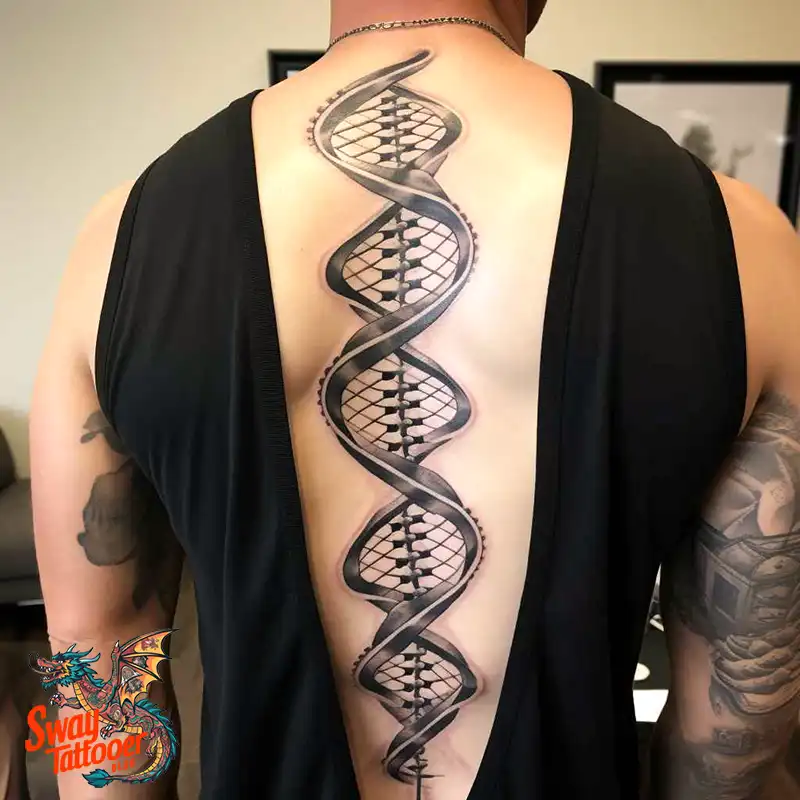
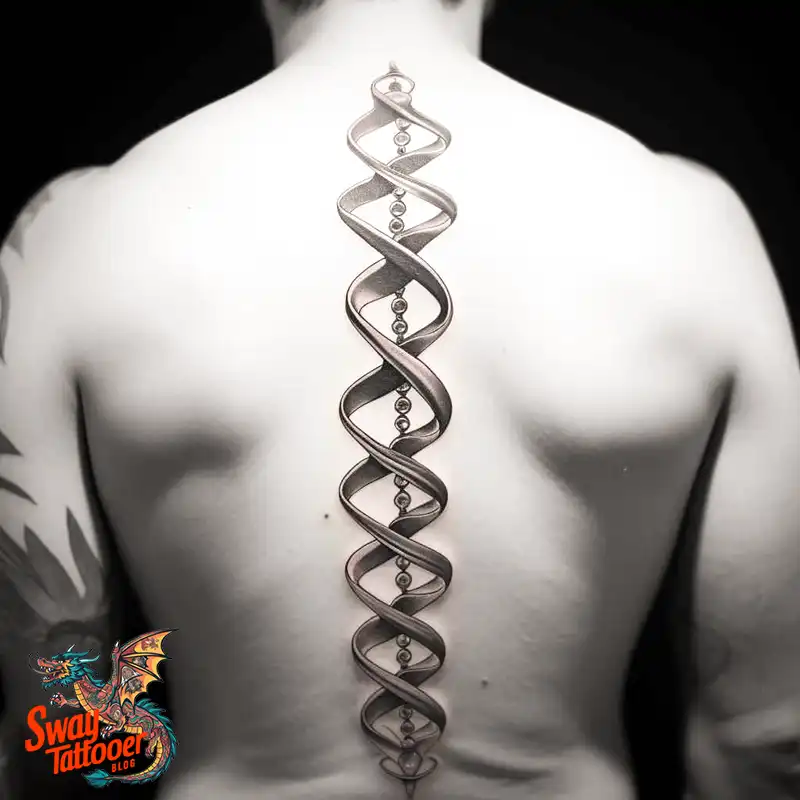
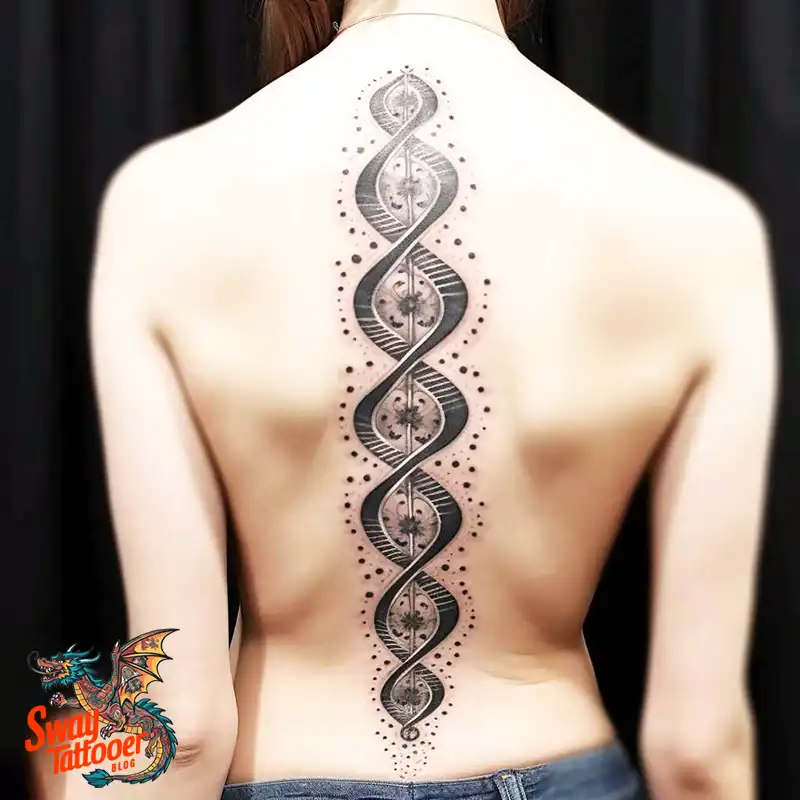
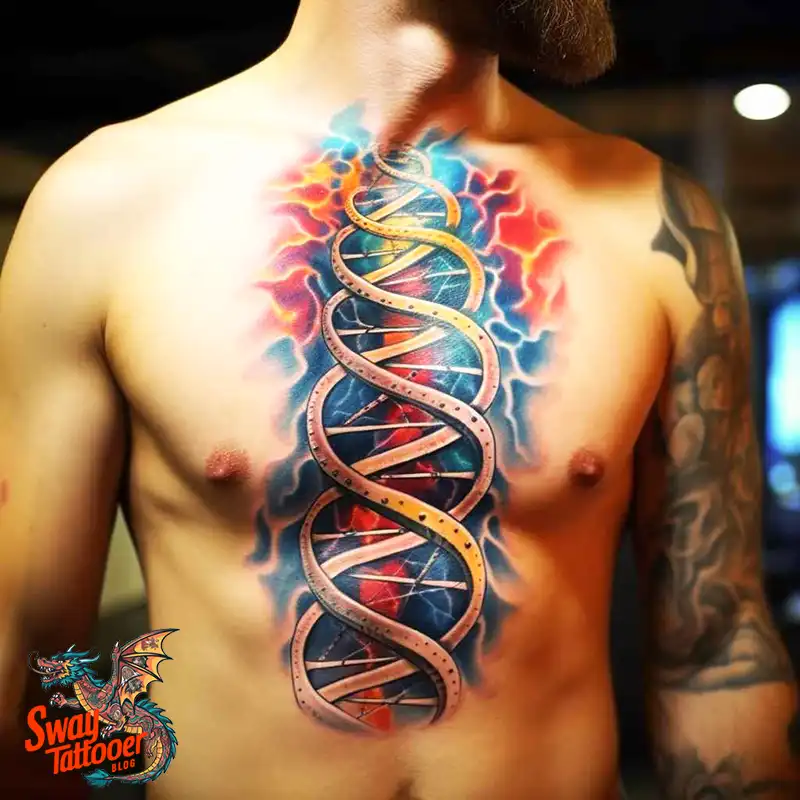
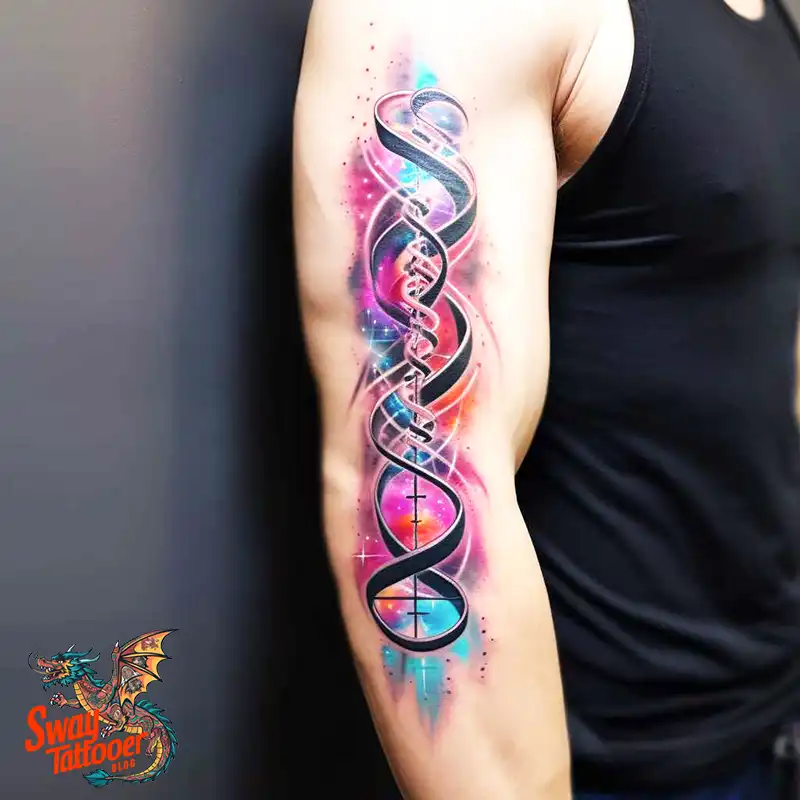
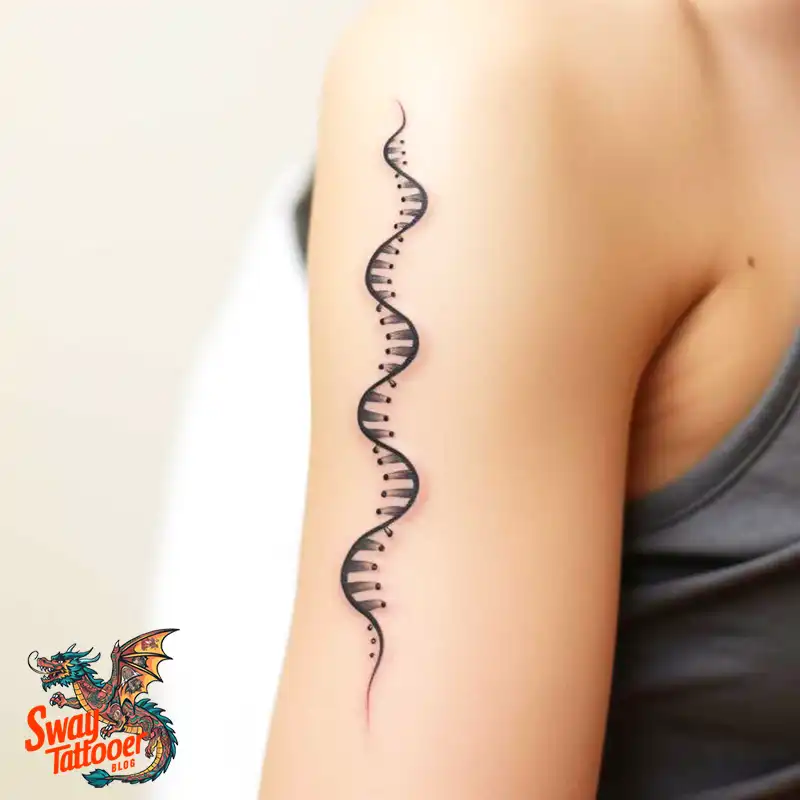
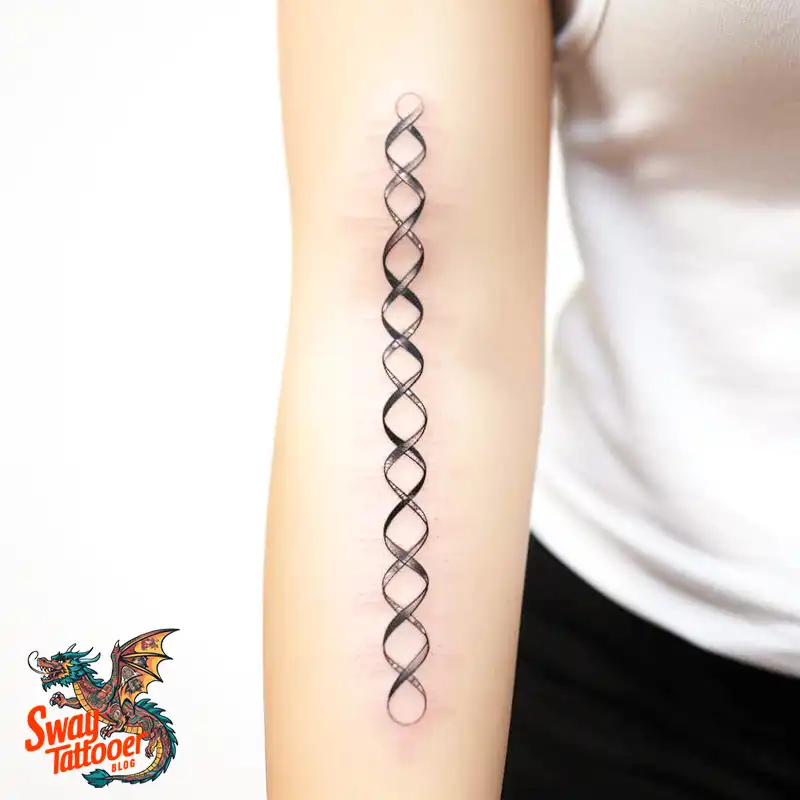





4. Why would someone want a DNA tattoo?
People seek DNA tattoos for several reasons. Some consider it their way of always carrying part of themselves or their loved one with them. Other people may look at this in remembrance of a dead loved one, to commemorate some sort of event that is important to their lives, or simply because they are looking at a means of unique expression.
5. Are DNA tattoos safe?
Generally, DNA tattoos are safe if done by professional tattoo artists using sterile techniques and high-quality, non-toxic inks. The DNA itself is purified and then mixed with the ink to assure no risk of contamination or adverse reactions.
6. How long does the DNA last in a tattoo?
The DNA in the tattoo ink has the tendency to degrade gradually with time, especially due to exposure to the immune response of the body and environmental elements such as UV radiation. However, the essence and symbolic meaning of the DNA are permanent in that tattoo.
7. Can I get a DNA tattoo using someone else’s DNA?
A number of people have DNA tattoos made from the DNA of a close family member, partner, or even their pet. This can be a touching memorial or a special way to feel connected with someone special.
8. How is the DNA incorporated into the tattoo ink?
Mixing with tattoo ink follows after extraction and purification of DNA in the laboratory. This is usually done by companies that have DNA tattoo ink kits and will integrate the DNA appropriately into the ink for the tattoo artist.
9. Will the DNA affect the quality or appearance of the tattoo?
The adding of DNA to the ink does not affect the appearance or quality of the tattoo. The ink will work much like tattoo ink does today, where an artist is able to create detailed, colorful designs.
10. How do I find an artist who can do DNA tattoos?
While the concept of DNA tattoos is increasingly gaining ground, not all tattoo artists have experience with this technique. It is important to research a professional tattoo artist who can work with DNA ink or one that has experience with DNA tattoos. Some specialized companies may also give recommendations or even partner with tattoo artists in order to offer this service.
11. How much does a DNA tattoo cost?
The cost of DNA tattoos is considerably different, depending on many factors such as the size and intricacy of the design, whether the professional conducting the tattooing has extensive experience or not, and how much more, apart from the extraction of DNA and preparation of ink, has to be done. Normally, you should expect to pay more than you would for a regular tattoo because of these procedures.
12. Would there be any legal or ethical concerns with DNA tattoos?
Like any other personal information, one should consider privacy and treatment in relation to your genetic material. First of all, make sure the services you are going to use to extract DNA and prepare the ink are reliable, and find out what happens to your DNA afterward: how it is stored and for what purpose. Ethically, make sure the DNA used with consent, especially in the case when it is from another person.
13. Can I remove a DNA tattoo just like a regular tattoo?
Yes, DNA tattoos may be removed as with any tattoo through conventional methods of removal. It may involve laser removal, for instance. Like all tattoos, this can be a long and painful process, and highly expensive, and it doesn’t necessarily completely remove the tattoo.
14. Are there special aftercares that need to be done with DNA tattoos?
Aftercare is pretty much the same as any other tattoo: follow the directions of your artist, which will most likely include keeping the area clean, avoiding the sun, and continuing to apply over-the-counter ointment recommended by them to help it heal without infection.
15. Is there scientific benefit to having a DNA tattoo?
Well, DNA tattoos are pretty much a method of self-expression and don’t hold any scientific benefits. Neither is the DNA in tattoo ink used for genetic analysis nor for any other medical purpose. The value mainly lies in the emotional and symbolic meaning to the wearer.
Conclusion
DNA tattoos are an interesting combination of modern science, personal identity, and artistic expression. These are the special tattoos that involve incorporating a person’s DNA into the tattoo ink to make something really personal and often meaningful.
From remembering the loved ones to proclaiming one’s genetic heritage, DNA tattoos offer a tangible, permanent connection with our biological being. As this trend continues to evolve, the scientific community and the tattoo industry should go hand in hand so that this practice would be kept safe, ethical, and respectful to individual privacy.
Ultimately, DNA tattoos are more than just ink meeting biology; they are a testimony to human curiosity and the will to explore and celebrate just about everything that makes life on Earth possible. As we continue to push the boundaries of human expression and find new ways to tell the story of body art, DNA tattoos serve as a reminder of the stories inscribed in our genes and the limitless ways in which we can choose to tell them.


Leave a Reply